Did you hear bout thebreathtaking landscapes of Argentina and more particularly those of Salta and its region? Would you like to come and see them in real life and make the most of your trip ? The Argentine Northwest ? Let yourself be carried away while making sure that you will enjoy the beautiful visits.
As a local travel agency based in South America, we know how much visiting Salta requires prior organization so that you don’t miss any of the must-sees. Our travel guide will help you plan your itinerary in the northwest by discovering the classics while including exceptional and authentic experiences.
In this guide, we’ll discuss all the details necessary to make this stay around Salta is an experience that exceeds your expectations and leaves you with the most beautiful memories. You will also find the information you absolutely need to know before going to Argentina!
Discover through maps and photos, the routes not to be missed and the experiences that will make your stay a unique..
Quid du où ?
quand ?
quoi ?
comment visiter Salta et le nord-ouest argentin ?
et les bonnes astuces de votre agence locale en Argentine !
To get down to business and start planning your trip to Argentina, complete our customized quote form in Argentina. One of our Travel Designers will get back to you to start planning your itinerary!
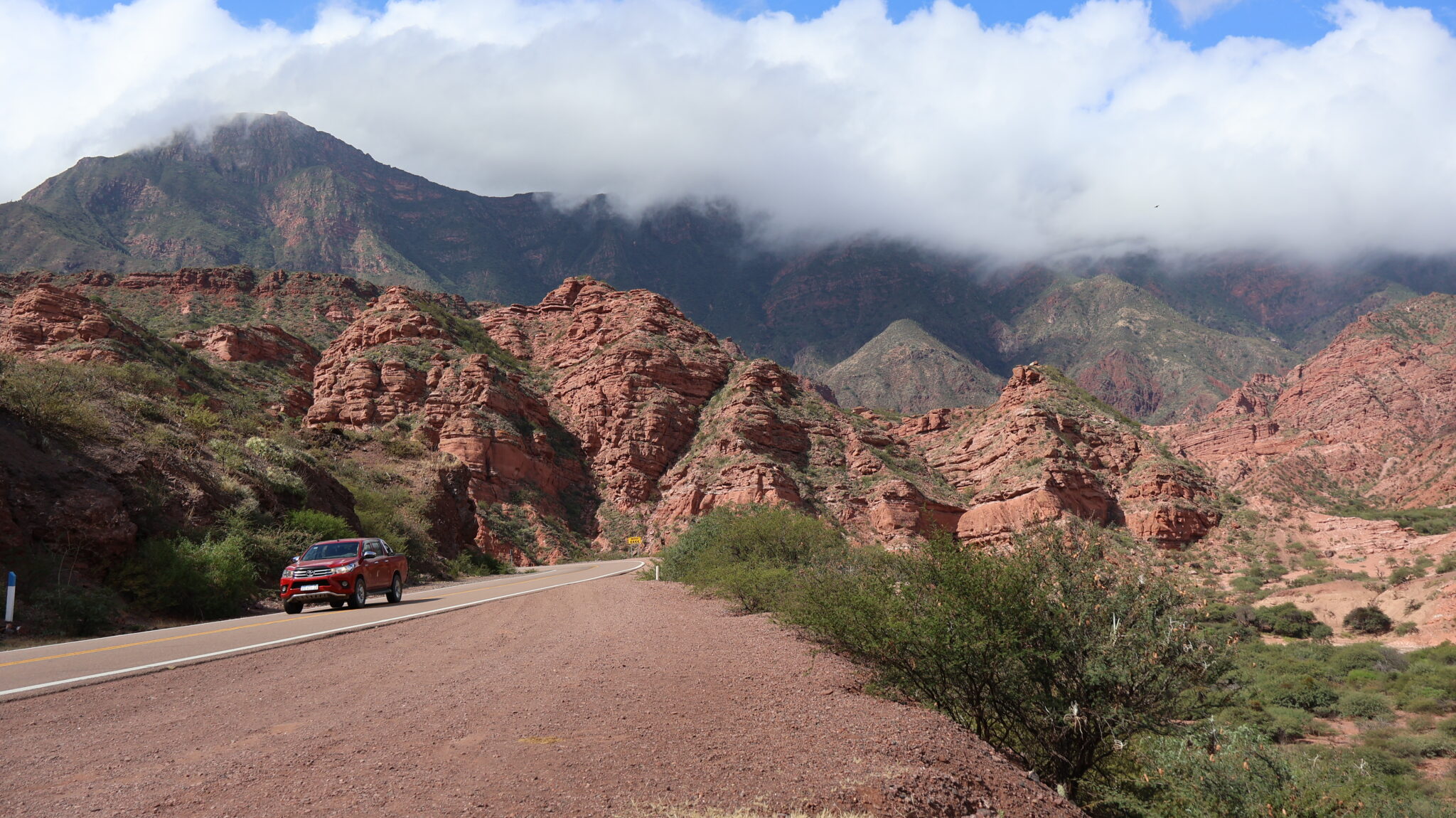
The Salta region is located in the far northwest of Argentina.
La région de Salta regroupe les provinces of Jujuy, Salta, Tucumán, Catamarca and La Rioja.
Mais lorsque l’on parle du nord-ouest (abrégé NOA) pour un voyage, c’est principalement à Salta et Jujuy que l’on se réfère.
Ces deux provinces regroupent à elles seules les paysages les plus emblématiques et les immanquables de la destination, ceux que vous ne pouvez pas manquer !
When you think of Argentina, you probably think of tango in Buenos Aires or imagine the gauchos of Patagonia. Perhaps you wouldn’t imagine that Salta and its region offer desert landscapes, colorful mountains, high-altitude vineyards, or Inca remains ? And that’s just a small part of what the Northwest has to offer!
Visiting the Salta region means discovering green valleys that weave between the red mountains. You will cross infinite plains where only cacti called cardones grow. We’ll also go to the highlands (Altiplano) of the Andes where we’ll be able to take pictures and original selfies in these vast white expanses.
Salta is ideal for backpackers or road trip enthusiasts. The mountain roads unfold viewpoints along the hairpin bends that will leave you speechless. You will successively go from dry, desert and cold landscapes such as those located in the Puna to humid, almost tropical, landscapes with suddenly lush vegetation in the Salta basin.
For wine enthusiasts or epicureans who love good food, this is a destination not to be missed! You will discover high-altitude vines located at more than 2000 m where the very particular climate shapes wines that will be appreciated by the most delicate palates. You will taste in particular the torrontes, the emblematic grape variety of the region, white, sweet, which will perfectly accompany the dishes of the region. And since we’re talking about good restaurants, you’ll indulge yourself with local specialties such as empanadas, llama meat or goat cheese.
As you can see, Salta and the Argentine northwest offer something for everyone !
➡️ So which experiences will better fit to your wanderlust ?
➡️Which itinerary should you choose for your family or for your travel friends?
As a local travel agency specializing in Argentina, we know the region perfectly and will be able to advise you on the activities that suit you! You can already make an appointment with one of our travel designers to prepare your ideal trip.
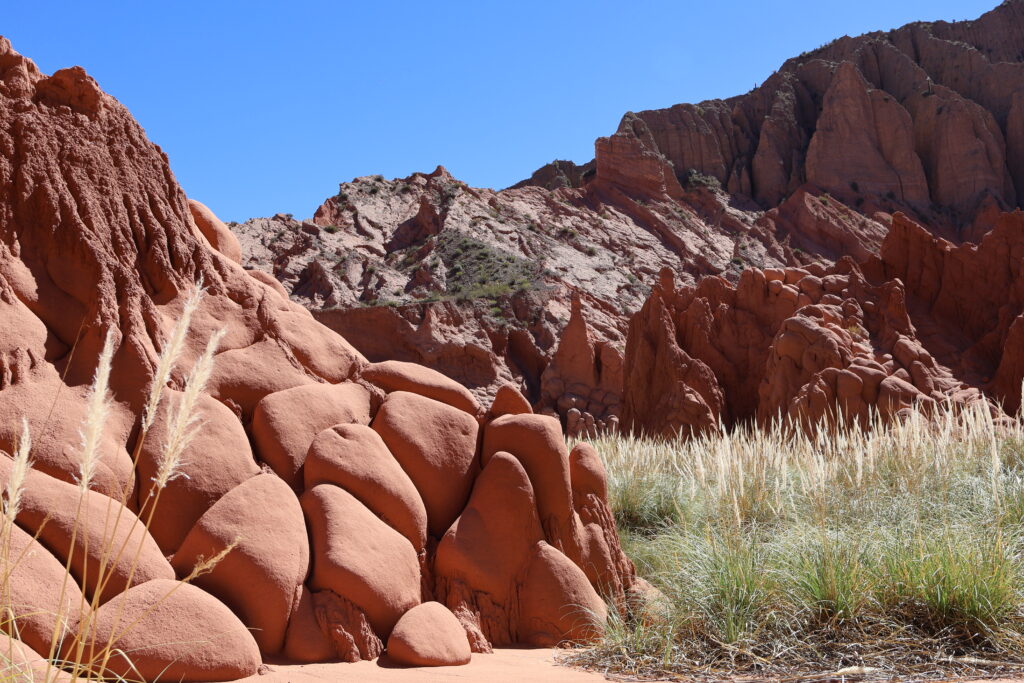
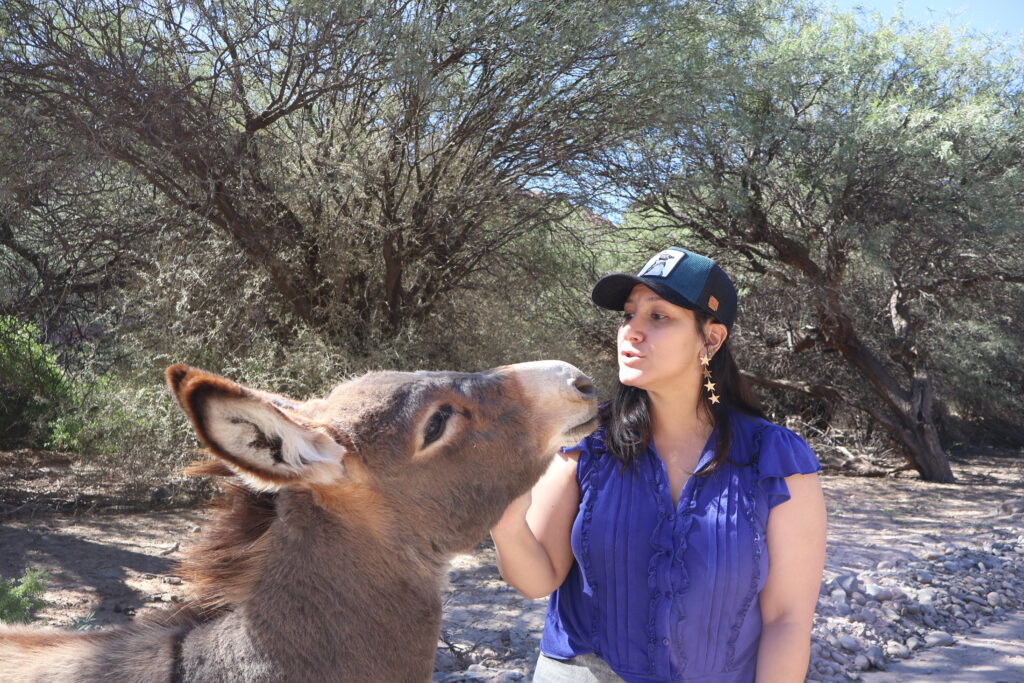
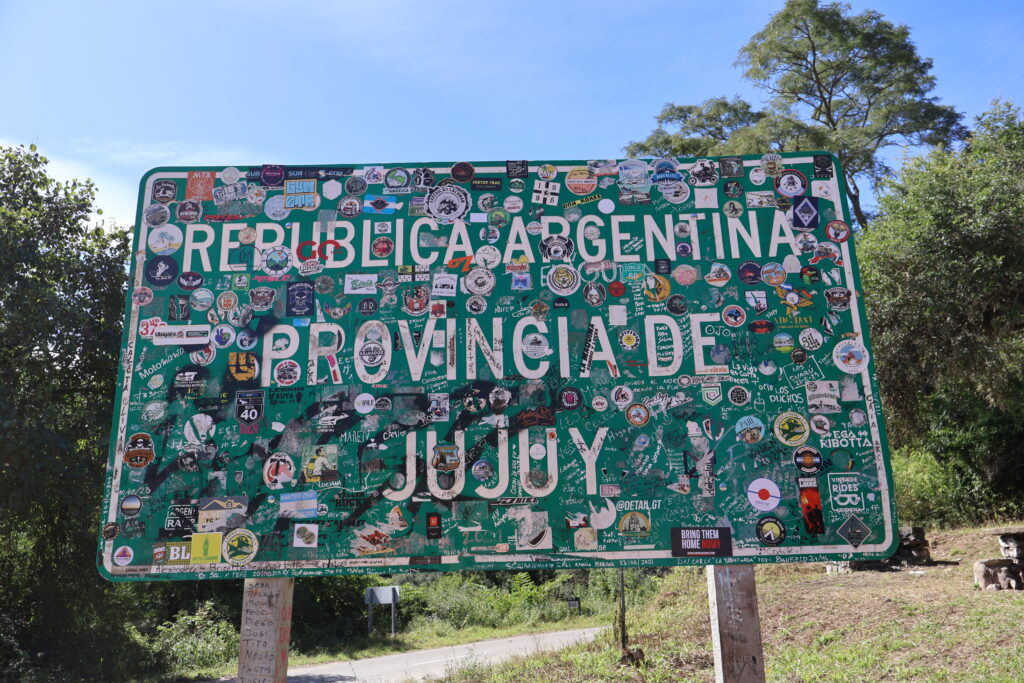
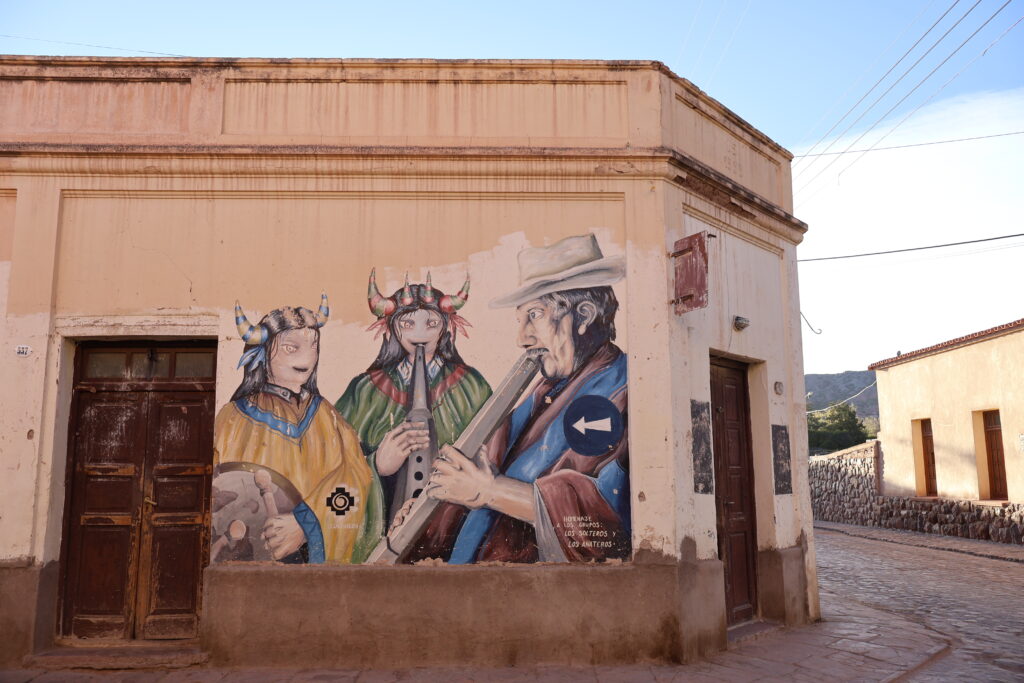
While preparing your stay, you may have heard of the North and South Loops. To decipher these terms, we must remember:
✔️ the southern loop starts from Salta, descends to Cafayate and goes up through Cachi to return to Salta, this route then drawing a circle on the map
✔️ the northern loop connects Salta, San Antonio de los Cobres, Purmamarca and Salta, with a round trip to the Humahuaca Valley. Depending on the season, it is better to change the loop to a round trip to the Humahuaca Valley because the road through San Antonio de los Cobres can be in very bad conditions. We will come back to this topic, covering the seasons aspects later on in this guide.
Now that we have located the Argentine Noroeste on the map of Argentina, the question is “what to visit in Salta?”. In this section, we detail the places we recommend visiting ! To choose what is worth it and think about your itinerary in Salta, follow the local guide!
This province borders Bolivia, a small part of Paraguay, Chile and the province of Jujuy. You will discover a very Andean region of South America with an incredible archaeological heritage. You will discover both the ancestral culture and the face of another Argentina.
Salta is the gateway to the region since the airport is located there. Nicknamed Salta la Linda (Salta the beautiful), it is pleasant to stroll through the city center marked by its past and colonial architecture. Take the opportunity to visit:
⛪ the Cathedral of Salta which dates from 1882
⛪ the Church of San Francisco, a magnificent neoclassical building
⛪the Church of La Viña, truly out of the ordinary with its ornamentation
✔️ The Virgin of the 3 Mountains
the San Bernardo cable car for the view of the city
✔️9 de Julio Square in the heart of the city
✔️ the Güemes Museum
✔️San Martin Park
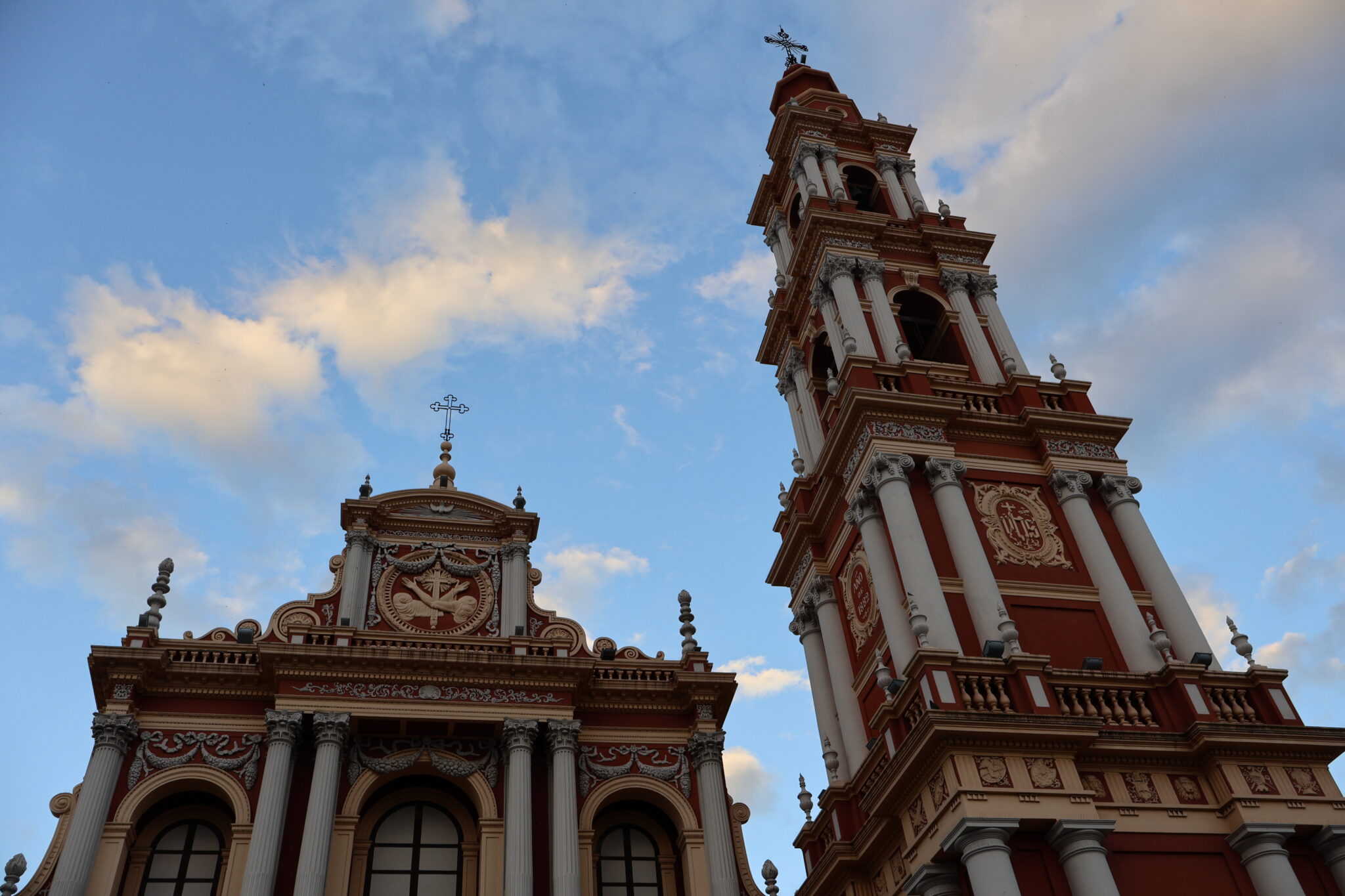
If you are not made for churches or visiting cities, there is ONE must-see that you must go and see, it is a consensus within the TravelCoachChile team. It is the High Mountain Archaeological Museum (Museo Arqueológico de Alta Montaña) in 9 de Julio Square, Salta. It’s even a favorite of Florence 🙂 who visited it at the beginning of the year. In particular, you will discover one of the 3 Inca mummies, which are really impressive because of their state of preservation. You’ll never see that again!
To learn more about these mummies: Excerpt from National Geo
"I was very impressed by the history of the mummies found, as well as the quality of their preservation. For me, it's a must-see in the city. I also recommend not to miss the cable car !"

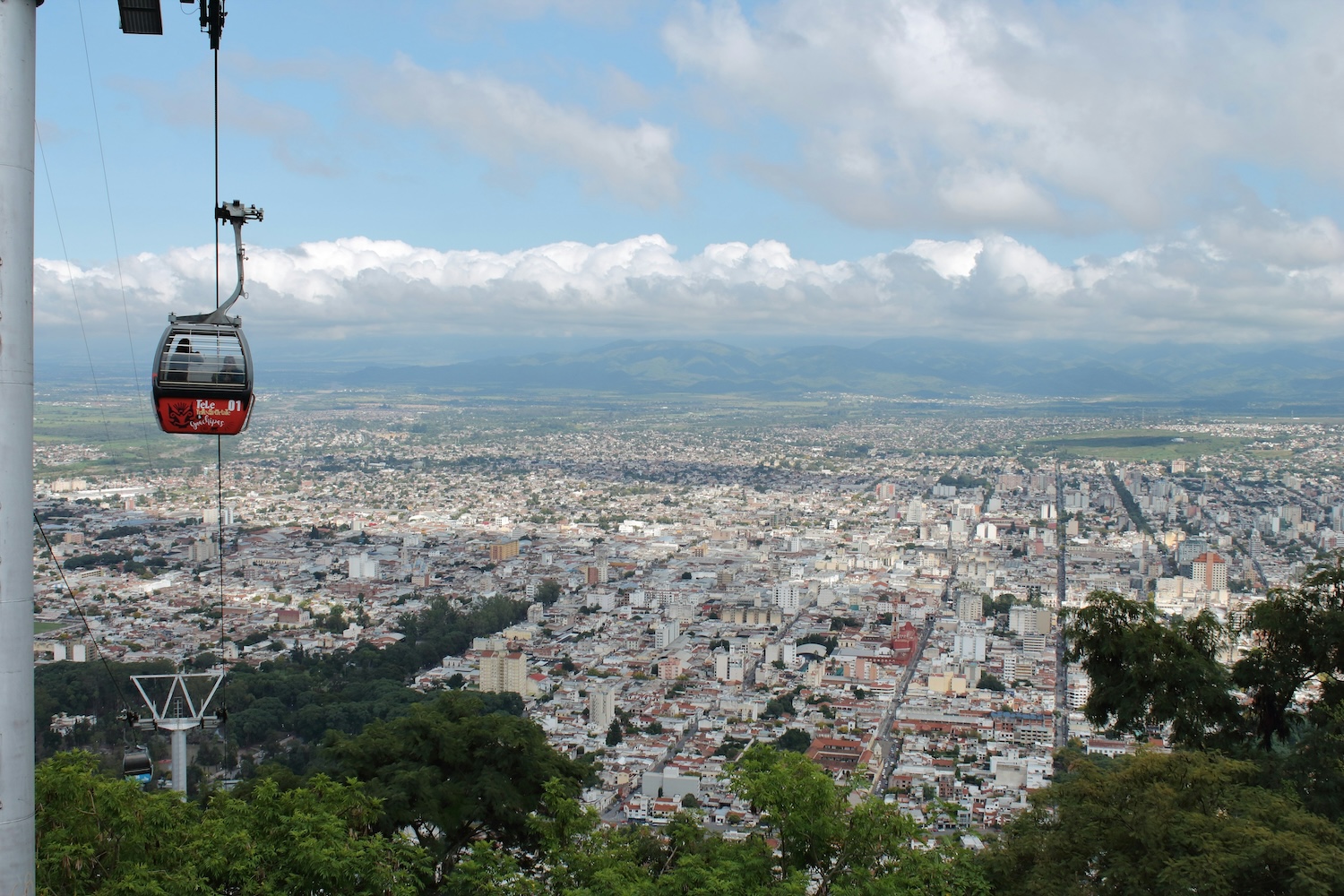
FromSalta you take the road to the south and Cafayate.
La route traverse littéralement la Quebrada de las Conchas National Reserve.
Sa principale particularité et ce qui en fait un site remarquable, ce sont ses formations géologiques qui dessinent des paysages du far ouest, avec des points clefs tels que la Gorge du Diable (Garganta del Diablo) ou encore l’amphithéâtre.
Si les photos vous ont plu, nous pouvons vous assurer que les paysages sont plus impressionnants en vrai !
Good to know: if you have time, visit the Yesera and its fossilized fish
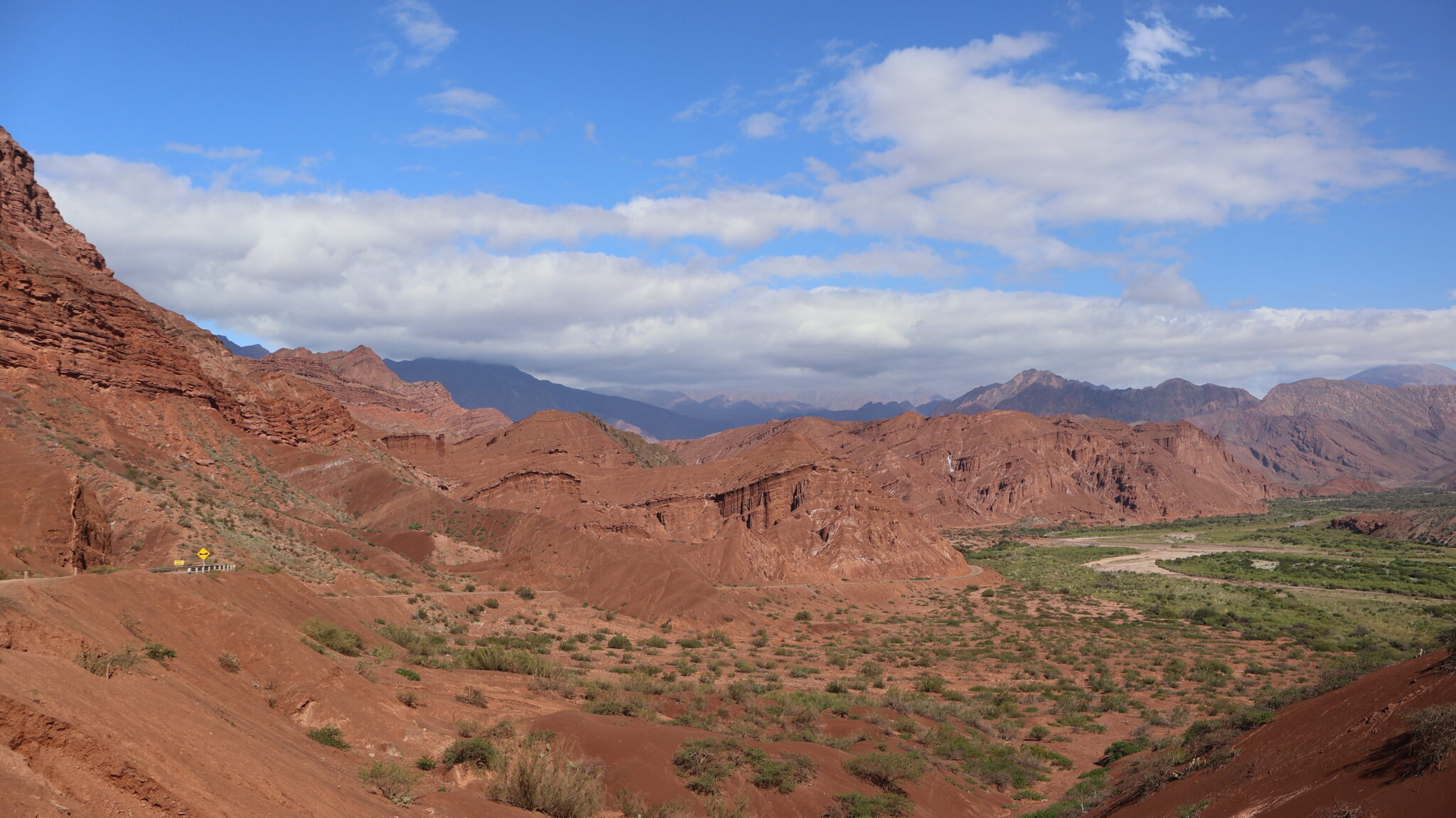
It is THE village in the area, Cafayate is the heart of the Calchaquies valley.
Cette petite ville rayonne au niveau national et international par sa production viticole puis ce que c’est la capitale du cépage blanc Torrontés.
Pour les amateurs de bon vin, You can visit many vineyards :
Haaa the famous Route 40 (ruta 40), one of the must-sees in Argentina ! You will certainly have the opportunity to discover it from top to bottom during your trip to Patagonia. But did you know that it actually starts in the very north of Argentina ?
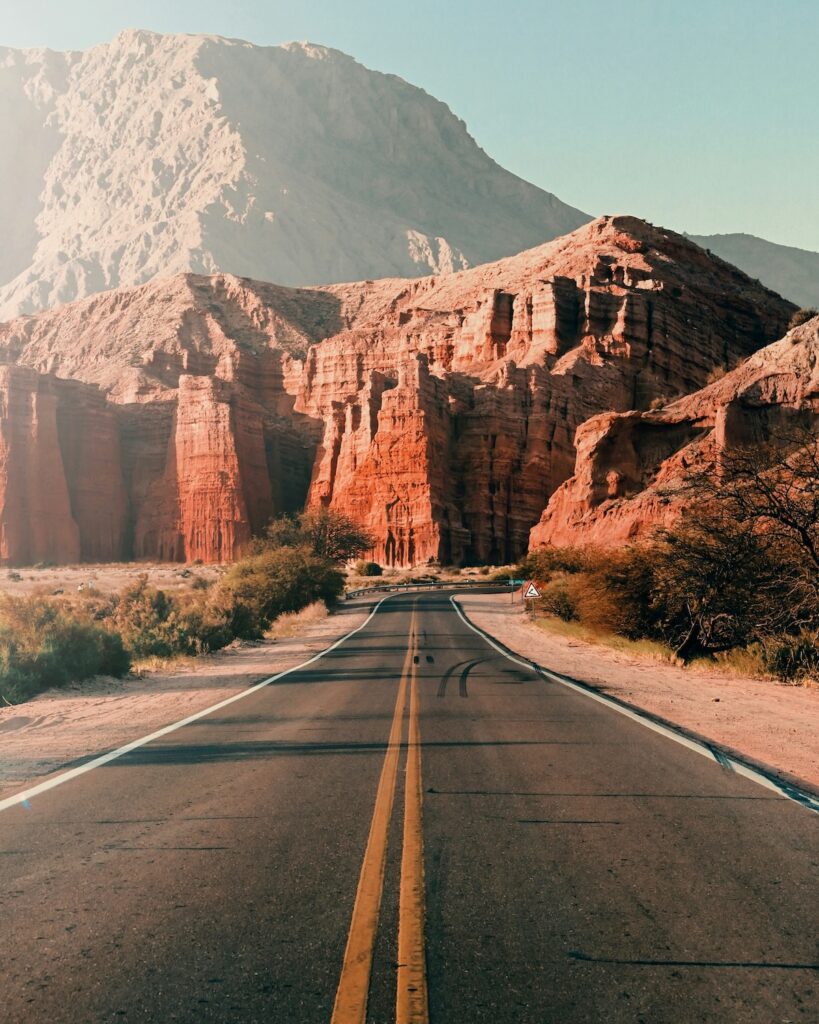
The Quebrada Valley of las Flechas is located on the road between Cafayate and Cachi, in the southern loop. This is the route of the mythical Route 40! You will cross magnificent and impressive geological formations: erosion has drawn arrowheads some of which reach up to 20 m high! By taking this road you will also cross pretty little villages such as Seclantás, Molinos or San Carlos which fascinated Claudia :-) !
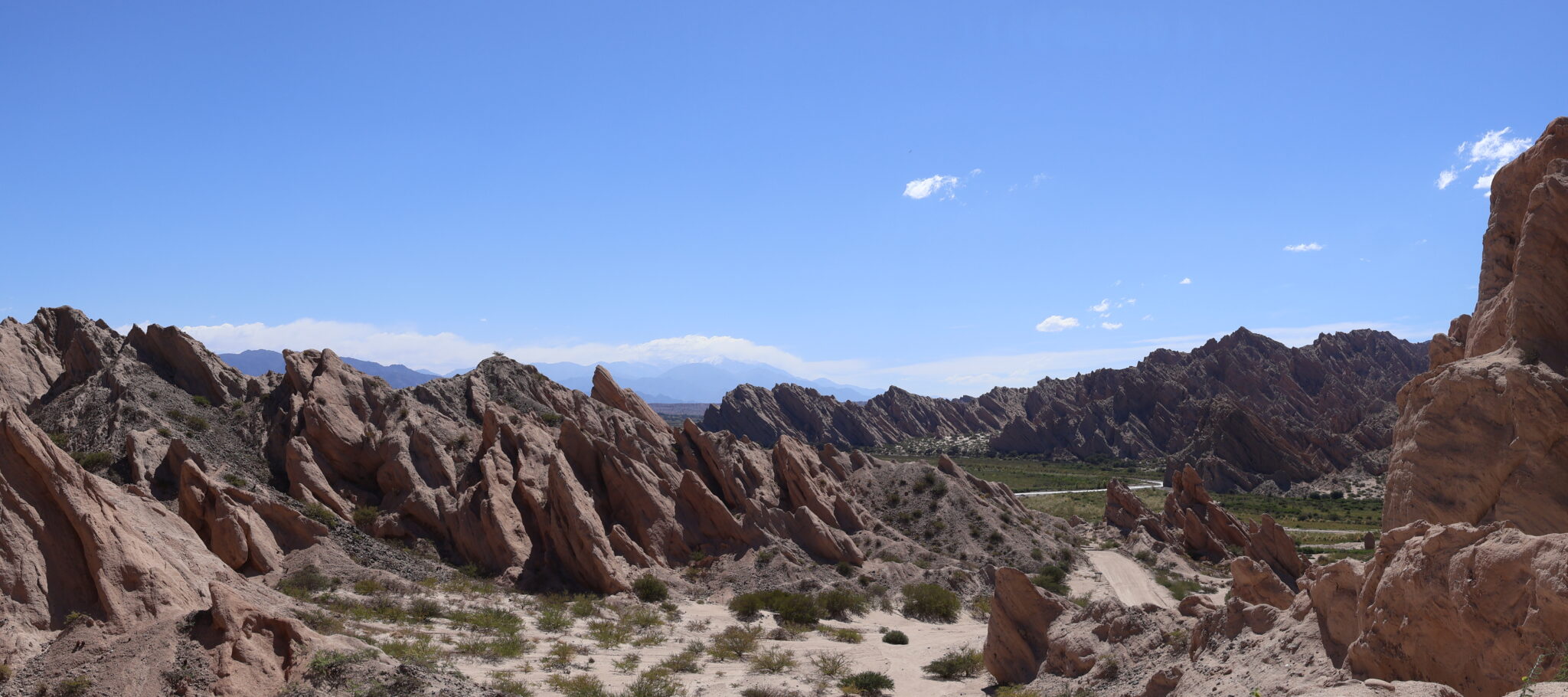
Molinos is a very small village on Route 40. He doesn’t look like much, not to say that there isn’t much but… it is an unmissable stop on the South Loop after or before the Quebrada de las Flechas. You can find a very good restaurant or even spend a nice night at the Hacienda de Molinos that we highly recommend!
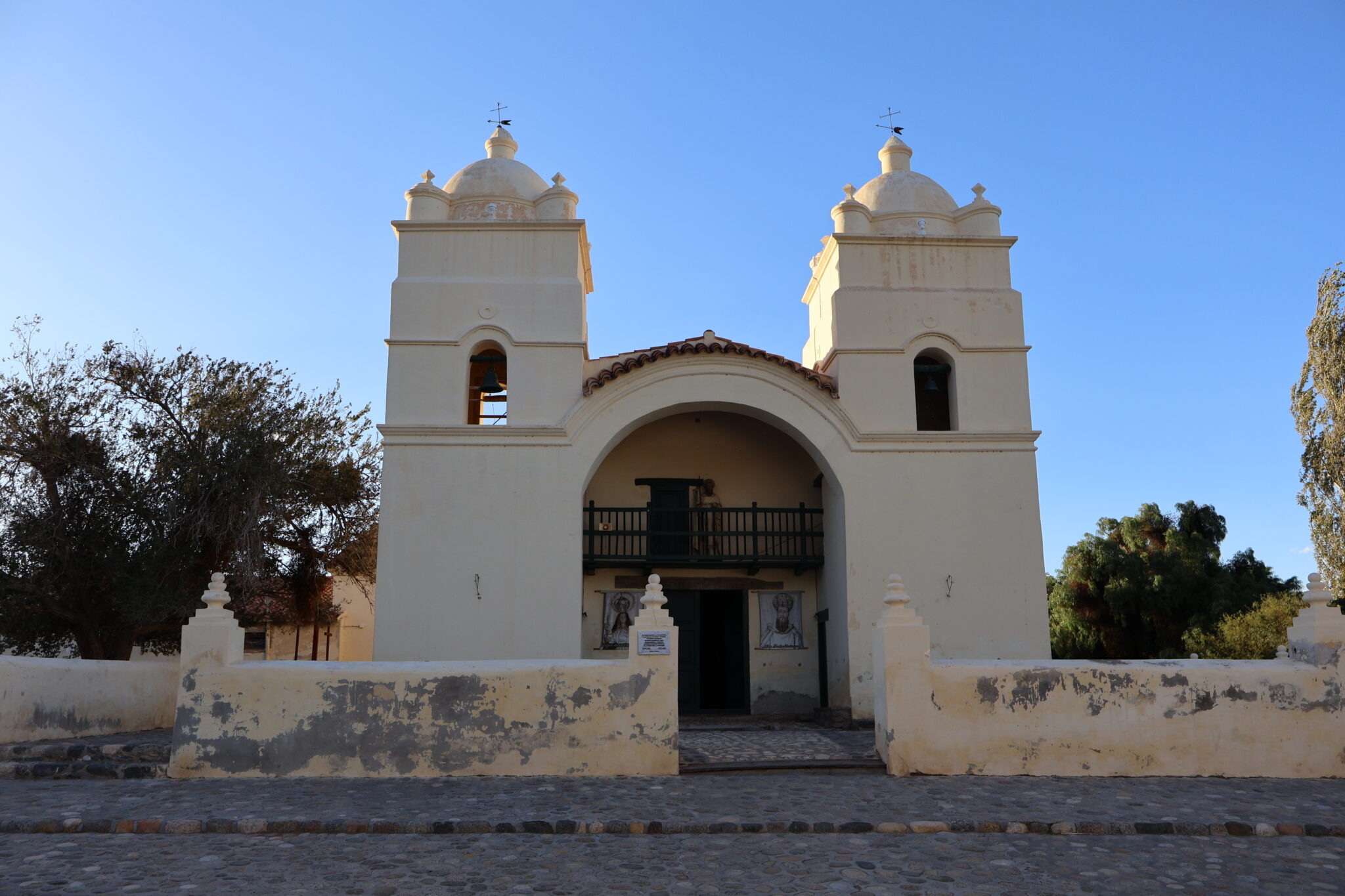
Cachi is a small and traditionnal village that you will have to cross. If you don’t spend the night in Molinos, then you will certainly sleep in Cachi. There is an interesting offer of restaurants and hotels to stop over. The village is dominated by a mountain with its eternal snow at more than 6000 m! Take the time in the morning to take a little walk in the village that wakes up, you will really feel the local life.
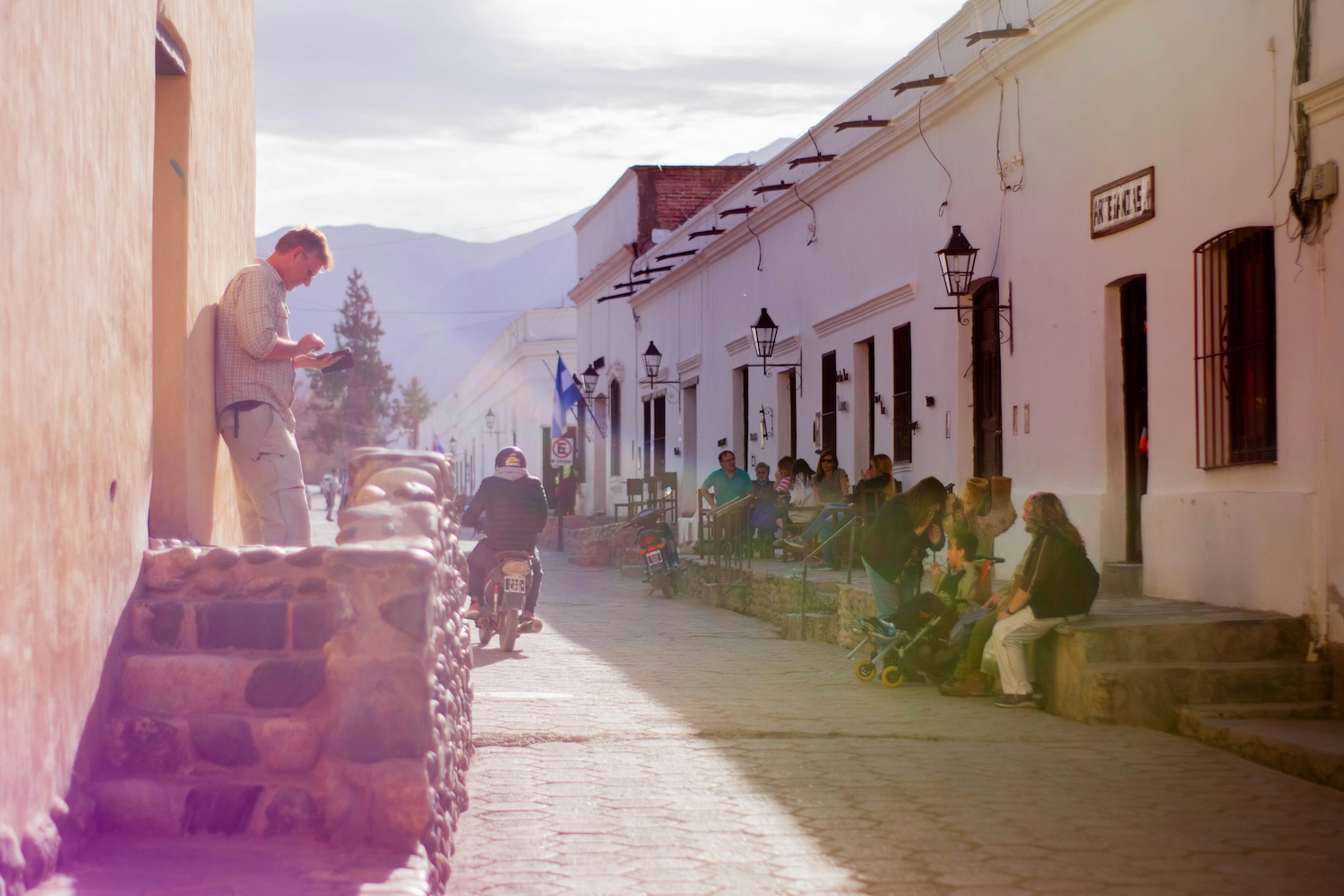
On the Seclantas side, there is a valley or “quebrada” Impressive! The water has carved gigantic coloured formations in the red, ochre and white rocks. You dive and immerse yourself alone in landscapes that you will have difficulty dimensioning. Erosion has done its job so well that it has even dug caves in the vertical walls. Local breeders discovered this area when they were looking for their livestock. It’s a real crush for Claudia our Operations Officer 🙂 !
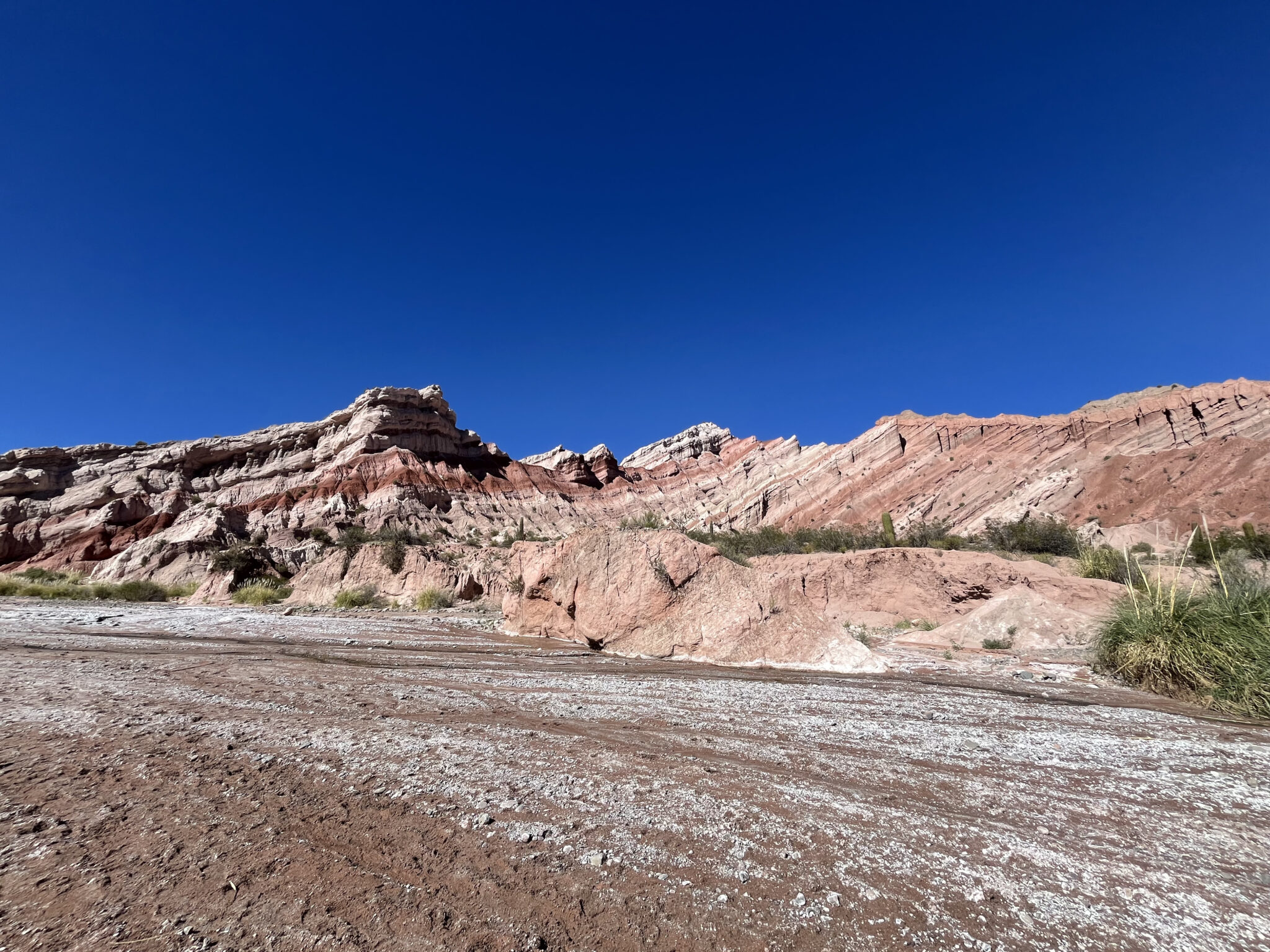
In the heart of these arid landscapes, you gain height. You will discover Brealito Lagoon located west of Seclantas. Not only is it an opportunity to take a short walk to admire the view of the Bréalito lagoon but also to discover cave paintings extremely well preserved where one easily recognizes animals and even hunting scenes. If you like sharing and discovering local life, you can also stay overnight at the locals in this rural area.
Near Cachi, the path leads you through a huge plain about 20 km wide. In the middle of the “cardones”, the road draws an incredible 18 km straight line in this landscape. Three points are set up to discover the views of this road and this vast expanse.
At the very end, climb to the top of the Mirador Ojo del Condor from where you will have the best view!
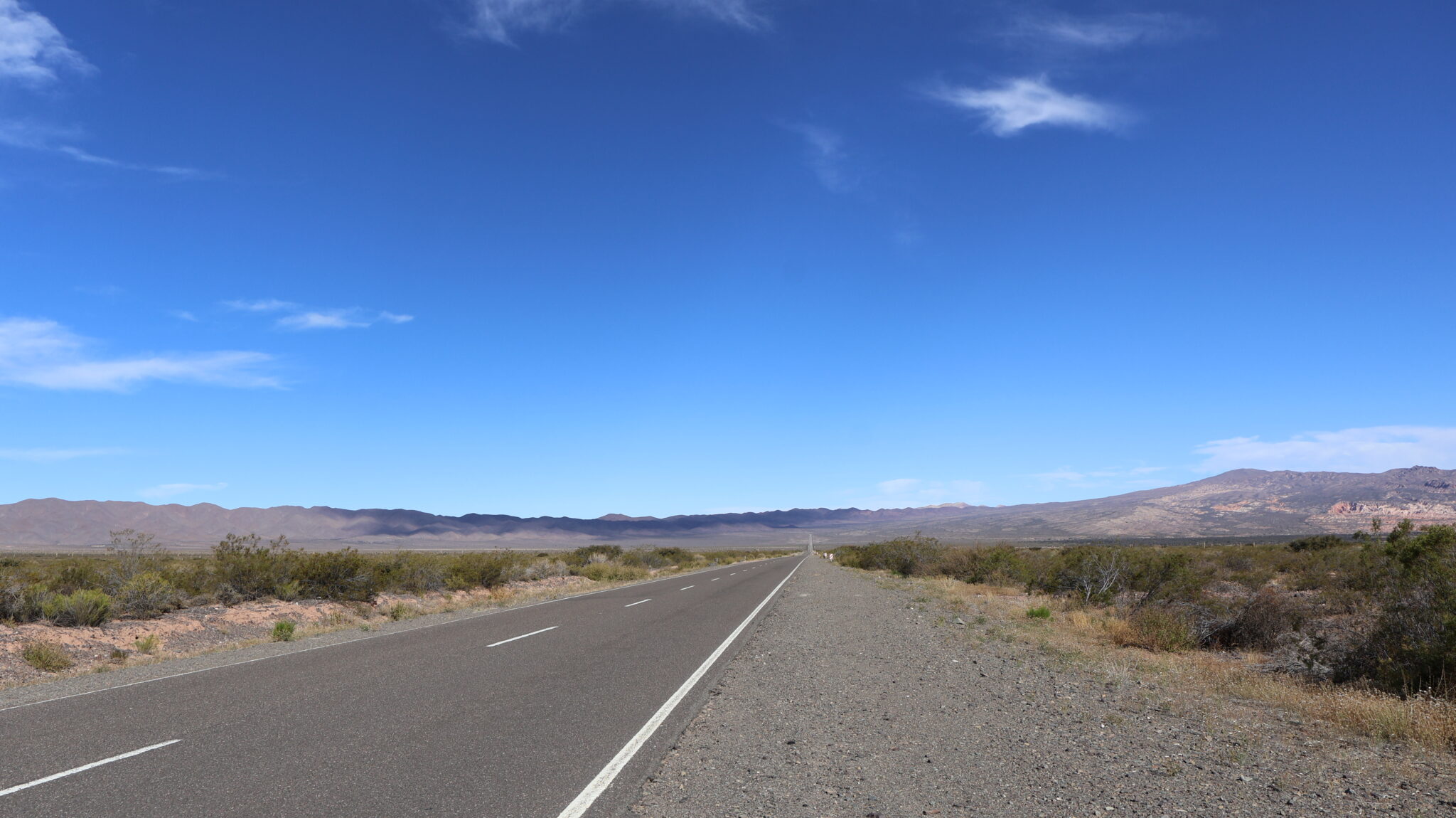
Los Cardones National Park is famous for its vast expanses of cardoon cacti, which can reach several meters in height. This park offers a unique biodiversity, with a variety of fauna and flora adapted to the arid conditions of the region. Here you can hike, bird watch, and enjoy the breathtaking vistas.
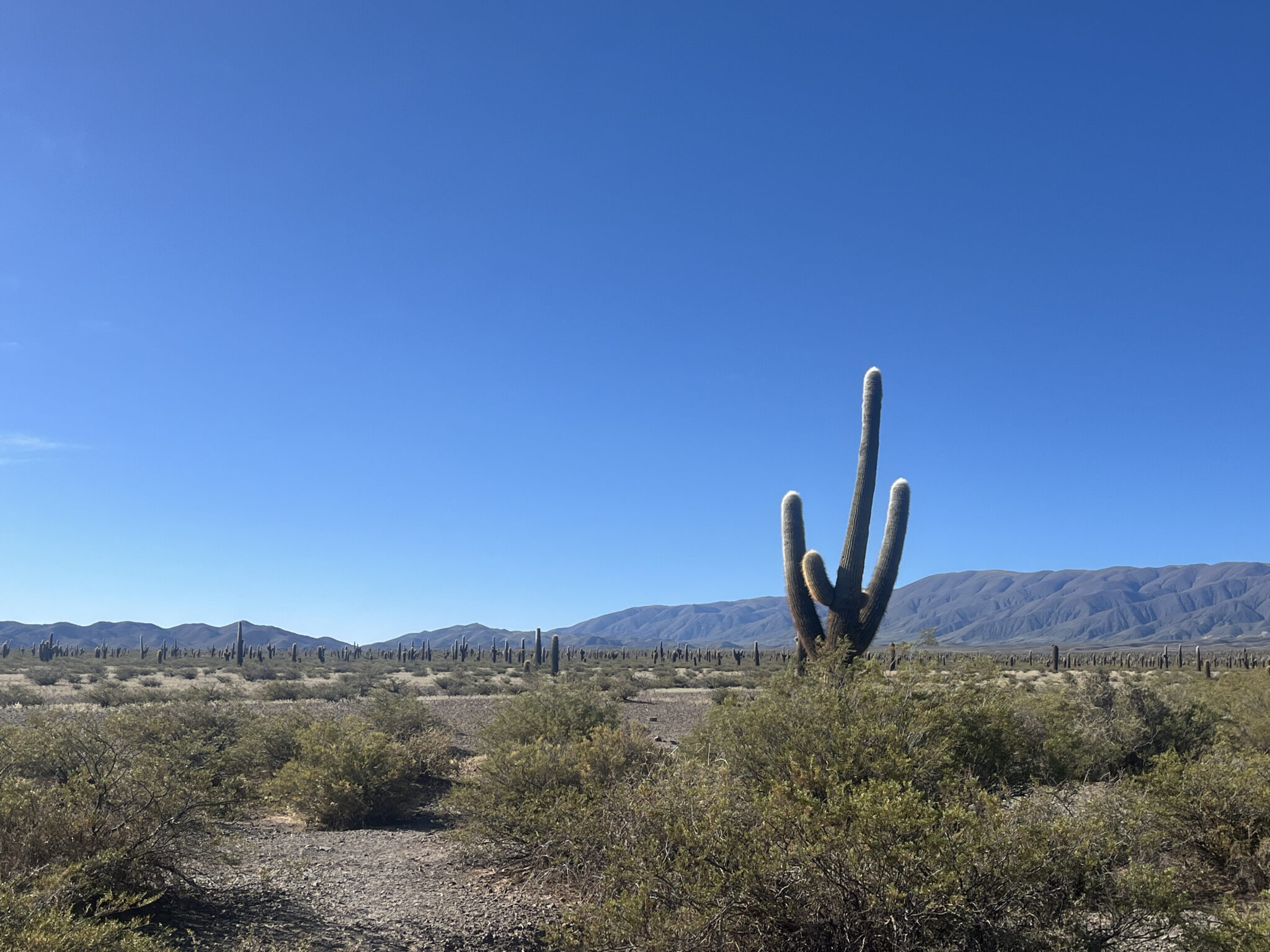
On the axis between Cachi and Salta, you have a stretch of road known as the Cuesta del Obispo.
C’est une très belle Winding mountain road.
Cette route vous fait traverser des paysages incroyables : du haut vous voyez des Mountains as far as the eye can see, it will be difficult for you to imagine their size. And then in the valley, you will have huge, magnificent walls where the red color of the rock contrasts with the green vegetation. If you’re lucky, you’ll even come across a little fox!
At TravelCoachChile, we advise you :
✔️prefer the direction of Cachi towards Salta, so you make the descent and enjoy the views that are impressive in this direction.
✔️to do this portion in the morning: in the afternoon, the clouds come in and block the view.

Tolar Grande is an off-the-beaten-track tour for the more adventurous ! It’s a real favorite of Florence 🙂, who can only recommend this excursion. You will go to the Poma at an altitude of more than 3,500 meters. And you benefit from the spectacular landscape with its vast expanses of desert surrounded by snow-capped peaks in the heart of the Andes. Here you explore lunar landscapes and fascinating geological formations. And for specialists, Tolar Grande is also a starting point for expeditions to the Cono de Arita, a remarkable volcanic cone, and to discover the unique fauna and flora of the region.
-> Good to know: considering the road, the isolation and the altitude, at TravelCoachChile we prefer to recommend that you hire a driver to travel to this area.
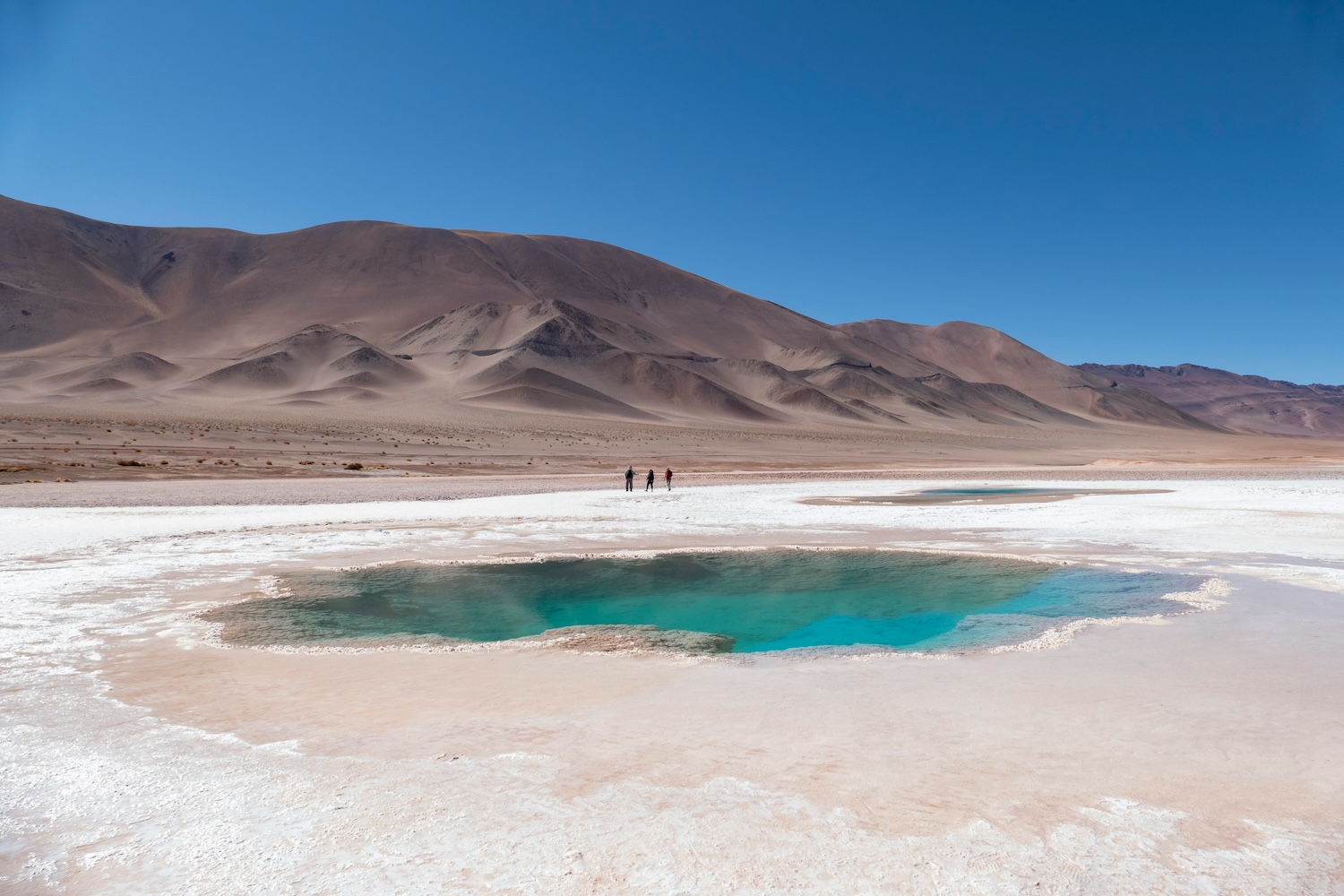
"It's a real adventure! Get ready for a colorful road trip, with 4x4 almost "off road" and long days. But what a pleasure for the eyes! A total change of scenery, almost a trip to another planet... It's an experience I recommend to travelers who want a glimpse of the wild and off-the-beaten-track Altiplano, especially if a trip through Chile is not possible."
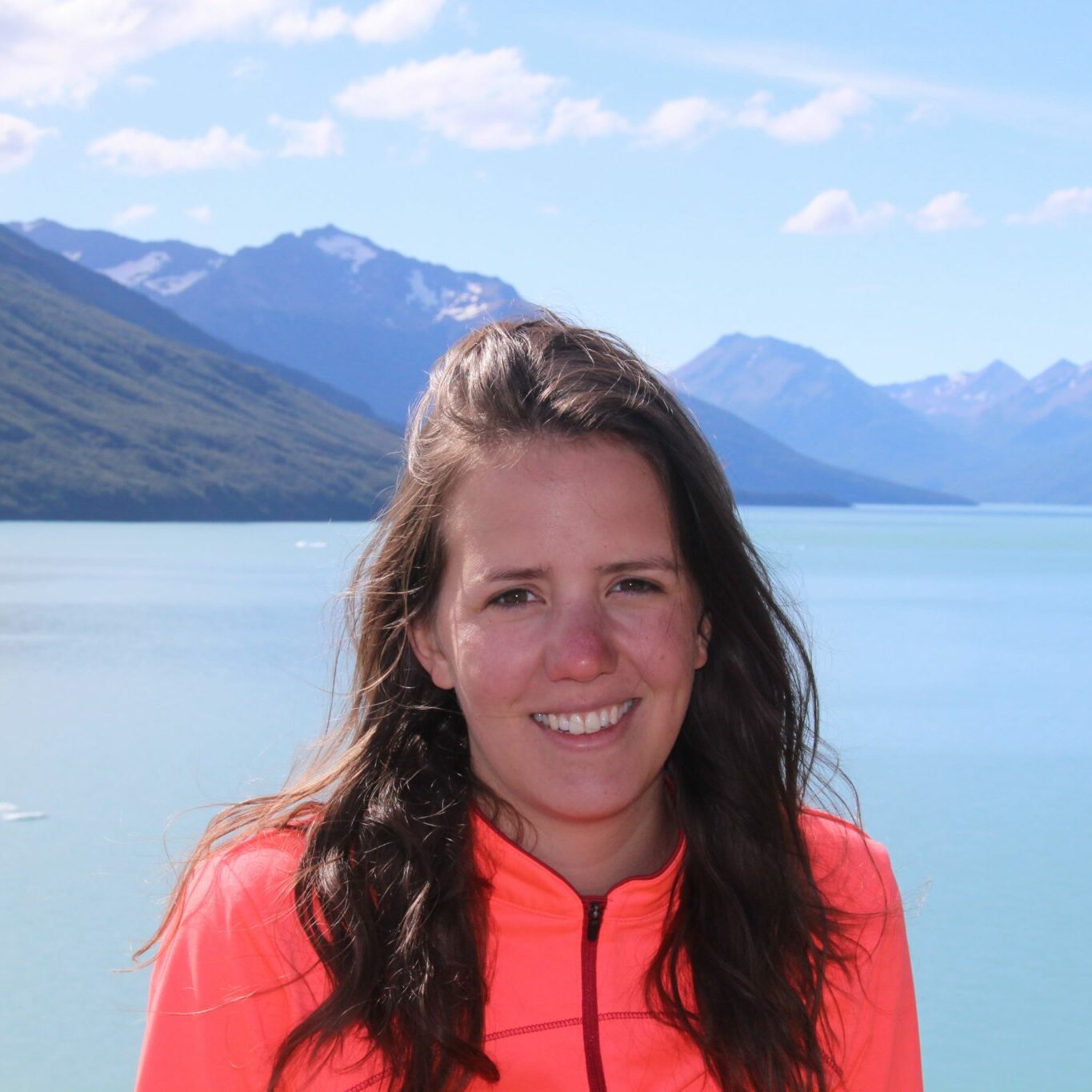
Jujuy is the province that you will visit by doing the northern loop.
C’est le chemin de passage si vous comptez rejoindre la Bolivie ou le Chili ensuite.
Vous changez d’ambiance et de paysage!
Vous découvrez la Authentic life in small villages in particular from the Humahuaca valley. A little about things to see!
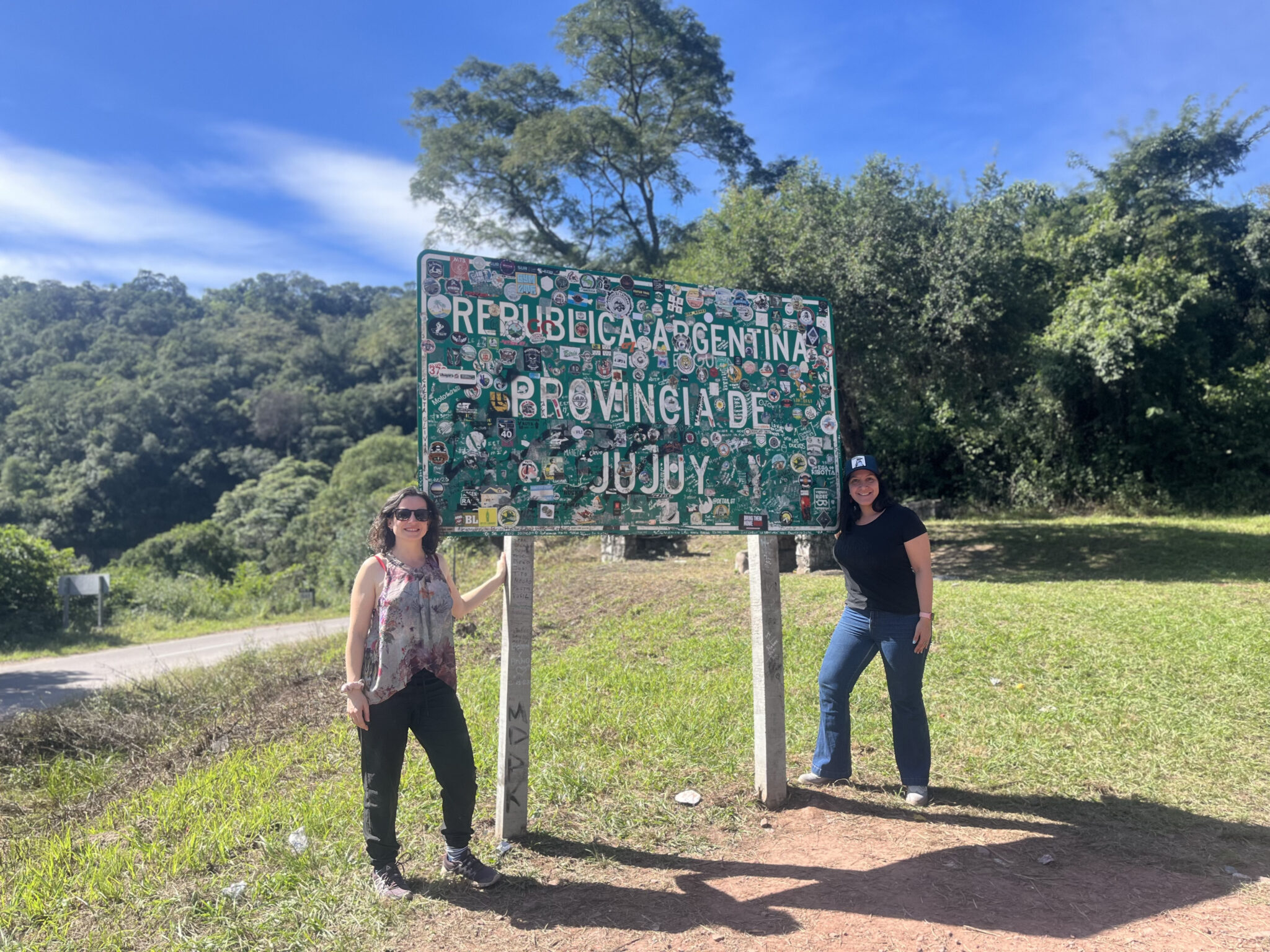
When discovering the Humahuaca Valley, you can’t miss Purmamarca, another must-see attraction on any trip to Argentina.
C’est un charming village famous for the Mountain of 7 Colors, or Cerro de los Siete Colores. The village itself, with its adobe houses and cobbled streets, offers you a glimpse of the traditional Andean culture.
Les marchés locaux vibrants, où l’on peut trouver de l’artisanat, des textiles et des produits locaux, ajoutent au charme de Purmamarca.
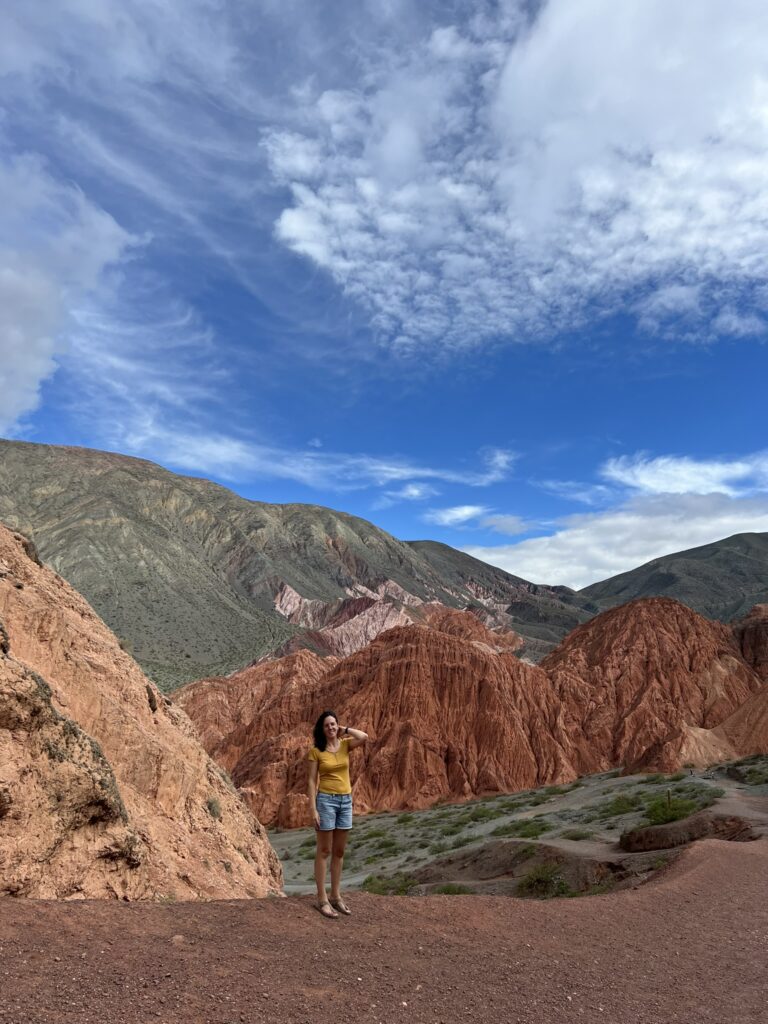
The villages of Maimará are a real jewel of the Quebrada de Humahuaca : it is surrounded by brightly coloured mountains. Have you heard of the “Paleta del Pintor” or the Painter’s Palette? This is where it happens! In Maimará you will also see terraced crops, where the locals grow vegetables and fruits. The village itself retains an authentic charm with its adobe houses, narrow alleys and cemetery is definitely worth a visit.
It is a very central place for tourism in the valley. Maybe a little too much, if you prefer run away from the crowds. That said, it’s the essential step if you like good restaurants. There are many visits to do, including short walks or walks with llamas for example. We recommend that you go to the Pukara to visit this pre-Inca fortress.
Attention, c’est fermé le lundi.
Good to know: if you need to change money (it’s rare enough to point it out) you’ll find it in Tilcara.
Located at an altitude of more than 2,900 meters, it is the heart of the Quebrada de Humahuaca.
Vous découvrirez un village est Rich cultural and historical heritage : the cobbled streets, the adobe houses, the interior of the church which shines with a thousand lights… everything is there to spend a moment! Anne regrets not having had more time in this village, which was a crush for her 🙂.
Vous trouverez une ambiance authentique.
-> Good to know: if you go on Thursday, you can see the appearance of a statue of San Francisco Solano from the church tower!
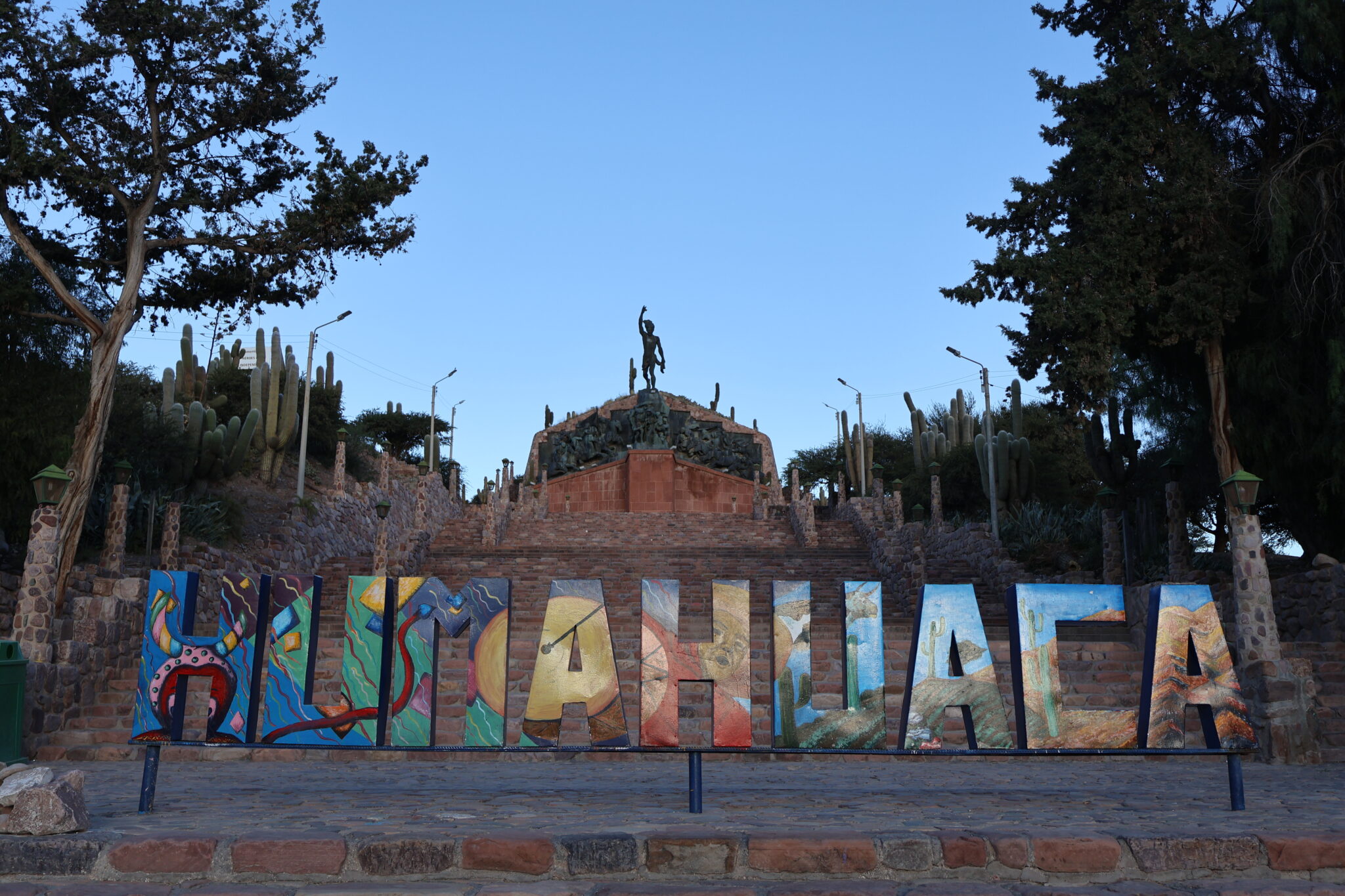
This is certainly the question that everyone will ask you: “Have you been to Les Salines?” In the heights of the highlands, on the way to Chile, there is a large surface covered with mineral salts, it’s a salar. And on this “salar”, there is an area of salt exploitation, that’s the saltworks! Imagine a really flat, white, immense expanse, so big that you can’t see the end of it. To some extend, it’s a a must-see in Jujuy.
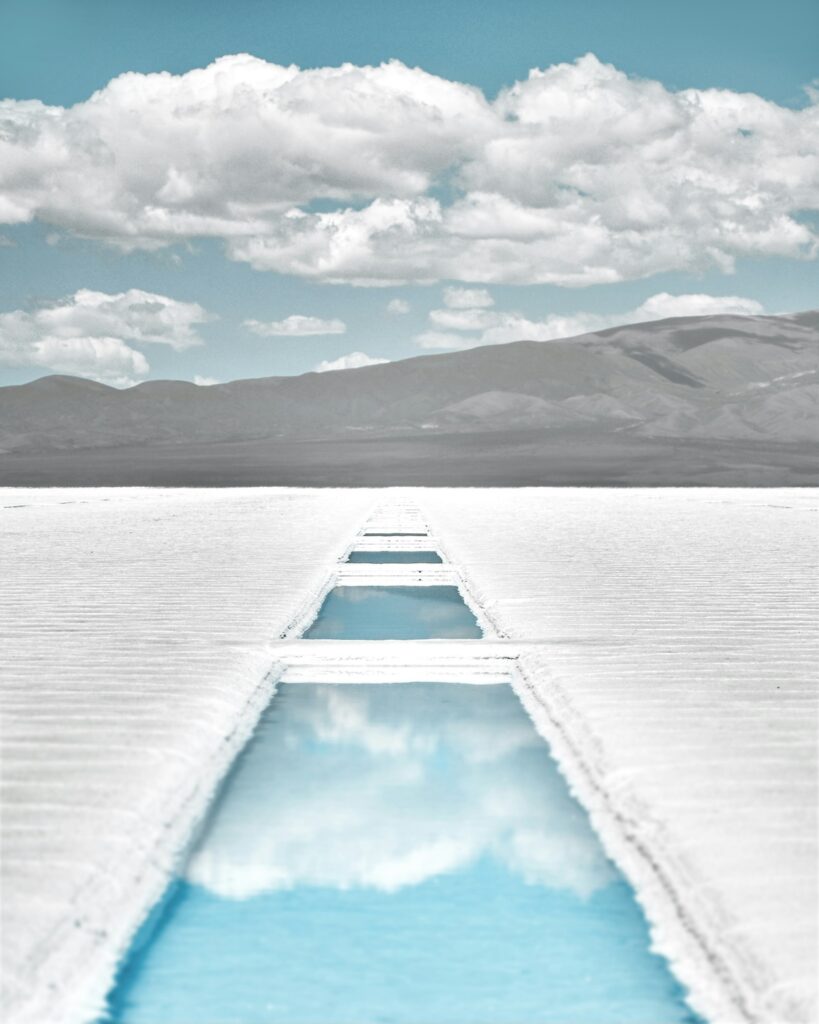
"Whenever possible, if you speak Spanish, prefer the option with a local guide. Indeed, these small visits organized by the staff who extract the salt allow them to diversify their income. "

The Inca Cave or Inca Cueva is an ancient cave known for its cave paintings and petroglyphs.
Cette visite vous donne un aperçu de la vie et des croyances des civilisations pré-incas.
Les gravures et peintures détaillées vous montrent des scènes de rituels de chasse ou encore des créatures mythiques.
Inca Cueva est un site historique important et un témoignage du passage des premières communautés indigènes.
The Cueva de las Señoritas is an off-the-beaten-track recommendation and it’s a favorite of Florence that really recommends this tour.
Dans la légende locale, des jeunes filles se seraient cachées dans la grotte pour échapper aux envahisseurs.
C’est ce qui les aurait sauvé et c’est pour cela que la grotte s’appelle la grotte des demoiselles.
Dans la grotte vous pourrez aussi voir des stalactites et stalagmites impressionnantes.
Et détail qui a son importance, c’est un UNESCO World Heritage Site.
On ne vous en dit pas plus !
Good to know: Visiting this site is only allowed if you are accompanied by a local guide.
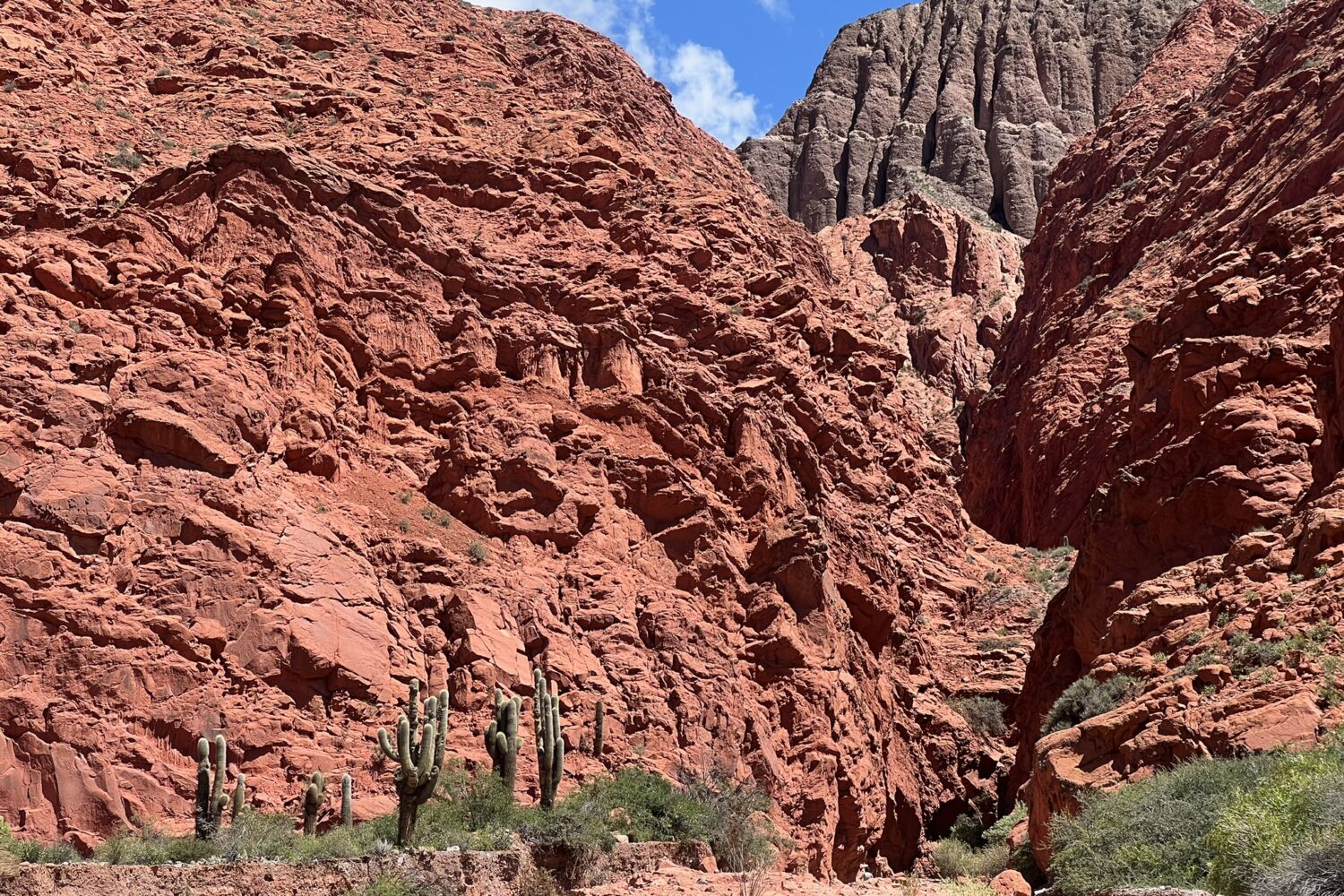
You can’t go to Humahuaca without going to see Cerro Hornocal, which you have certainly heard about while preparing your travel itinerary in Argentina.
Chez TravelCoachChile, nous vous recommandons de vous rendre jusqu’au Belvedere located at 4350m to admire this incredible mountain with 14 colors.
Pour la petite histoire, elle doit son nom à une communauté qui y avait construit des fours, horno en espagnol, de Cal.
It is possible to take a short walk to admire the mountain from a second lookout.
Good to know: You should prefer the afternoon to get there. Indeed, as the locals say, the sun paints the mountain, in the hours from the afternoon.
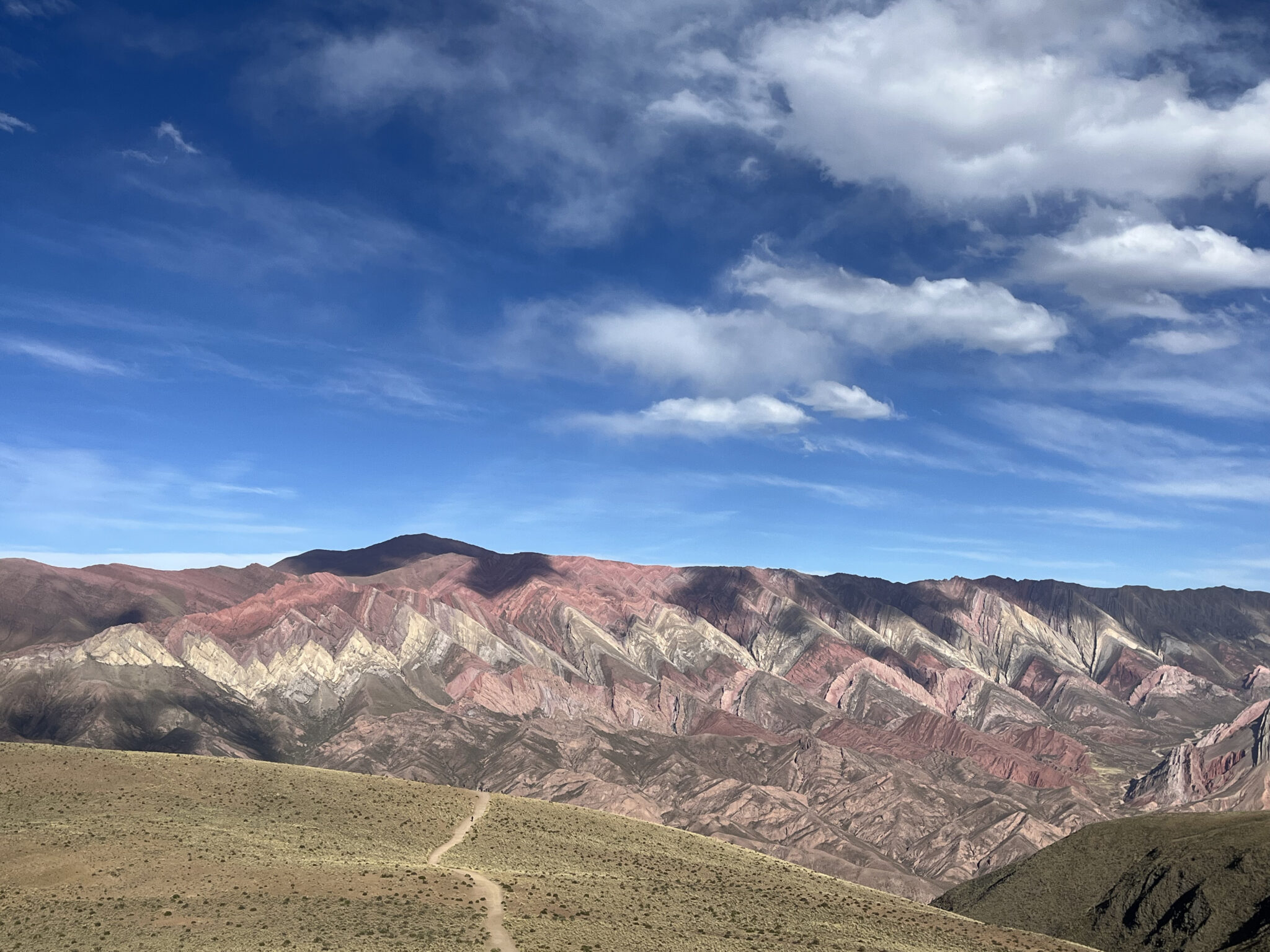
If you want to add to your trip to Argentina some hikes of varying lengths ranging from walks to sporting challenges, the Northwest has what you need to please you. Among the most classic hikes and treks you have:
-> 14-Colored Mountain: Trek with spectacular views of vibrantly hued geological strata.
Cerro de los Siete Colores in Purmamarca: A short climb offering a panoramic view of the famous mountain of seven colors.
Brealito Lagoon: Short walk but going up to see the cave paintings
the caves of Acsibi : Accessible walk with sometimes some more complex passages depending on the rain. It’s Anne and Claudia’s big crush
Pucará de Tilcara: Trail leading to an old pre-Columbian fortress with stunning views of the valley.
– On the side of Cafayate: Hike through vineyards and to unique rock formations like the Amphitheater and Devil’s Throat.
On the Parque Nacional Los Cardones: Trails through desert landscapes dotted with giant cacti and colorful mountains, including the Valle del Encanto
-> Salinas Grandes: Hike through the vast expanses of this dazzling salt desert. 🙂
Iruya: Hike in this secluded village, accessible only by mountain trails, offering spectacular views of the surrounding area.
Nevado de Cachi : Hike for experienced walkers to this imposing 6000 m peak.
Laguna de los Pozuelos: Walk around this lagoon rich in biodiversity, especially flamingos.
For horse riding lovers, you will love horseback riding in landscapes worthy of the most beautiful movies.
Que ce soit une balade de quelques heures ou une randonnée avec bivouac, nous avons tout ce qu’il vous faut !
Here are some ideas for horseback riding:
Salta: Explore the surrounding hills and valleys with horseback rides that will give you spectacular panoramic views and an immersion in the local culture.
Cafayate: Discover the unique vineyards and rock formations of the Calchaquíes Valley on horseback riding tours through desert landscapes and picturesque vineyards.
Purmamarca: Admire the Hill of the Seven Colors (Cerro de los Siete Colores) and the surrounding colorful landscapes as you explore this area on horseback.
Quebrada de Humahuaca: Explore this UNESCO-listed valley, with equestrian trails leading to archaeological sites and traditional villages.
Tilcara: Enjoy horseback riding through pre-Inca ruins and picturesque landscapes of the Quebrada de Humahuaca.
Cachi: Discover this picturesque village and its mountainous surroundings as you travel along tranquil trails on horseback, offering stunning panoramic views.
-> Good to know: For the more experienced, it is also possible to go horseback riding for several days. Do not hesitate to contact your local agency in South America for personalized information.
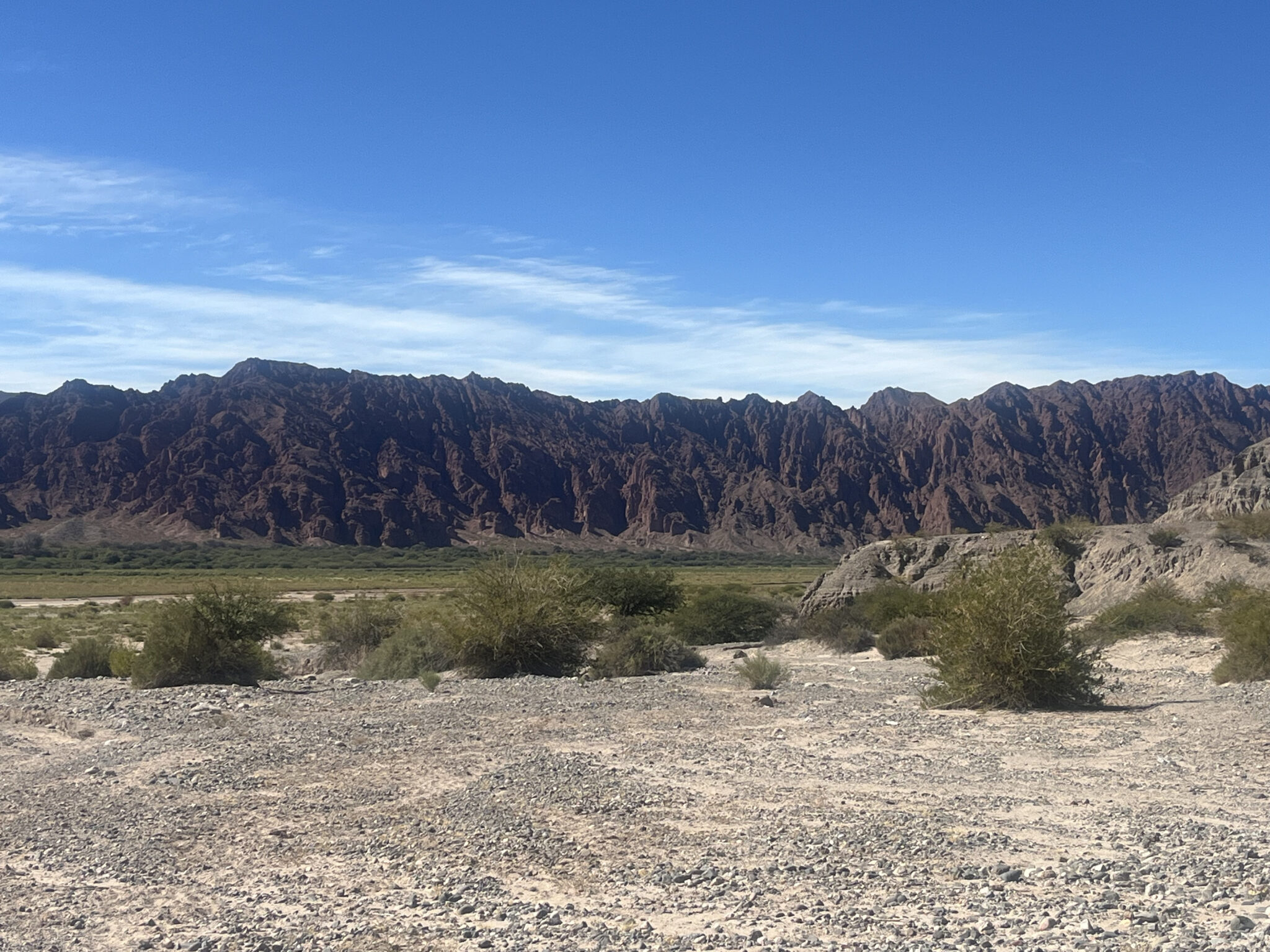
Are you a fan of archaeology? paleontology? of cave painting? Salta and its region have something for you!
✔️The cave paintings of the Brealito Lagoon: This lagoon is surrounded by mountains and cliffs where you will find cave paintings. These will give you a fascinating insight into pre-Columbian art.
✔️The Ruins of Quilmes : This archaeological site will give you an insight into ancient indigenous techniques and cultures, including rock remains.
✔️The Yesera fossils: accessible from the Quebrada de las Conchas, you will discover marine fossils dating back to the Cretaceous period. You’ll see ammonites and other sea creatures, a testament to a past when the area was covered by the sea.
✔️The paintings of the Cueva del Inca: Here you will see stylized human figures, animals, geometric symbols, and hunting scenes. This will be an opportunity for you to learn about the beliefs and daily life of the ancient inhabitants of the region.
In this Mecca of the heritage of the Calchaquis and Diaguitas, handicrafts and pottery are a historical practice. Discover this ancestral culture through a pottery class that will allow you to learn more about ancient arts and the symbolism of decorative motifs.
The Train of the Clouds, or “Tren a las Nubes” is one of the most iconic railway experiences in Argentina.
C’est un train pas comme les autres qui vous emmène à plus de 4 200 mètres d’altitude !
Le parcours impressionne : il serpente à travers des tunnels, des viaducs et des ponts, dont le célèbre Polvorilla Viaduct, a masterpiece of engineering! For lovers of rail travel, the Train of the Clouds is a must-see in Salta.
To find out more about the train of the clouds: Excerpt from Faut pas rêver french TV show
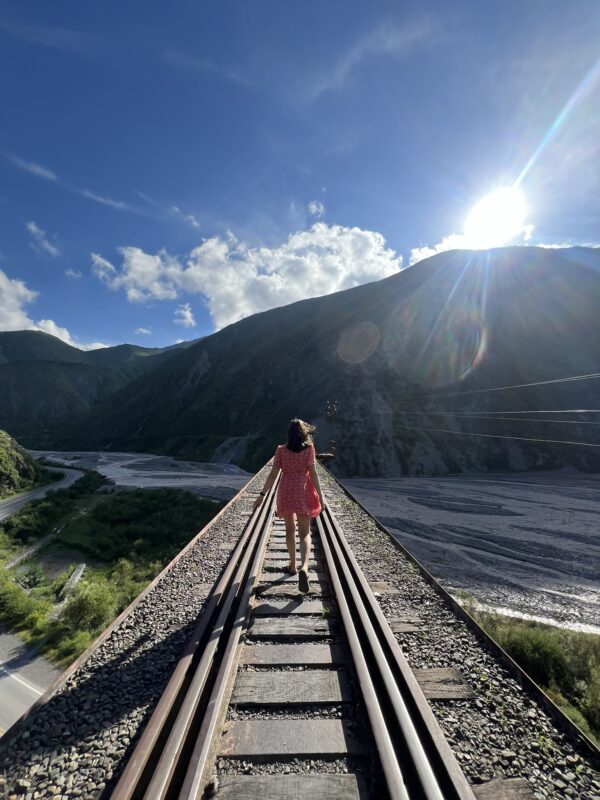
Cycling in Salinas Grandes is a unique experience that as a local agency in Argentina we have the opportunity to organize. Imagine pedaling through this desert landscape, in the heart of these expanses of white salts that contrast beautifully with the deep blue sky. Amateur cyclists or not, the panoramic shots will impress you. It is an adventure that offers not only unique photographic opportunities but also a deep connection with you and nature. Visit to high-altitude vineyards in Uquia
For wine lovers, this is an experience to be had! You go up to 2800 meters above sea level, to the village of Uquía which is surrounded by vineyards. You will discover local grape varieties grown at high altitudes, which produce wines with distinct and intense flavours.
C’est l’occasion d’apprendre les techniques de viticulture locale et l’histoire de la production de vin dans cette région andine. You will enjoy a tasting accompanied by local products with a breathtaking view of the surrounding mountains.
An experience that we like to offer, and not only to families with children, is the llama caravan. Claudia and Anne had a great time with Selene, a real crush 🙂.
Ces animaux ont leur caractère, ils ne sont en rien agressif mais ils sont bien têtus ! Who will win between you and this animal who only thinks about eating?! These are guaranteed moments of joy and laughter in an incredible landscape! And then you will certainly only do it once in your life.
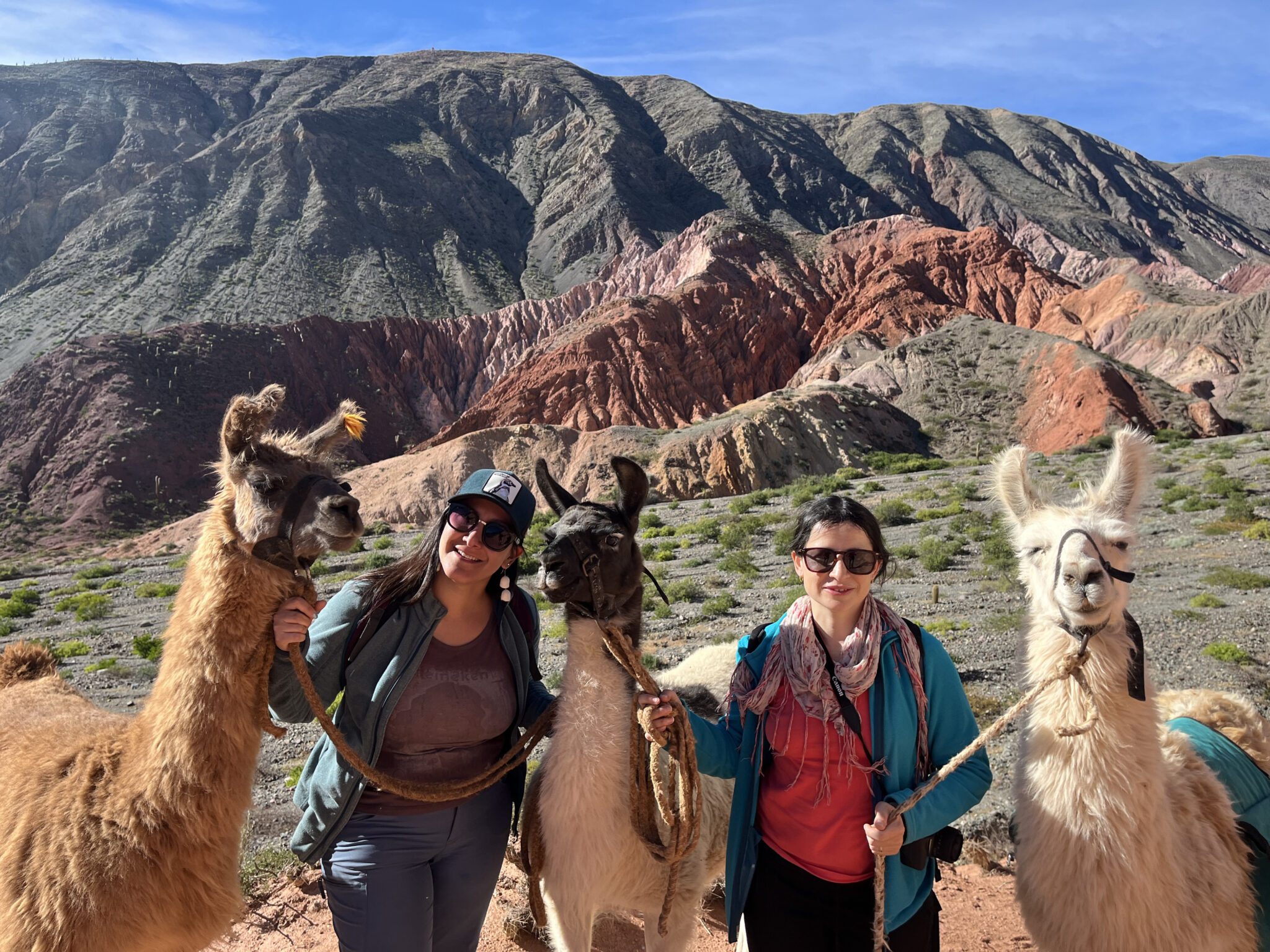
Not far from Molinos is the Estancia Colomé. This place will interest you doubly if you are both the good wine enthusiast and art amateur.
En effet, le domaine fondé en 1831 produit du High-altitude wine (beyond 2300m altitude). After the takeover in 1998 by the Hess family, the new owners built the James Turrell Museum where works by this visual artist who worked around light are exhibited.
-> Good to know: Only two tours are organized daily.
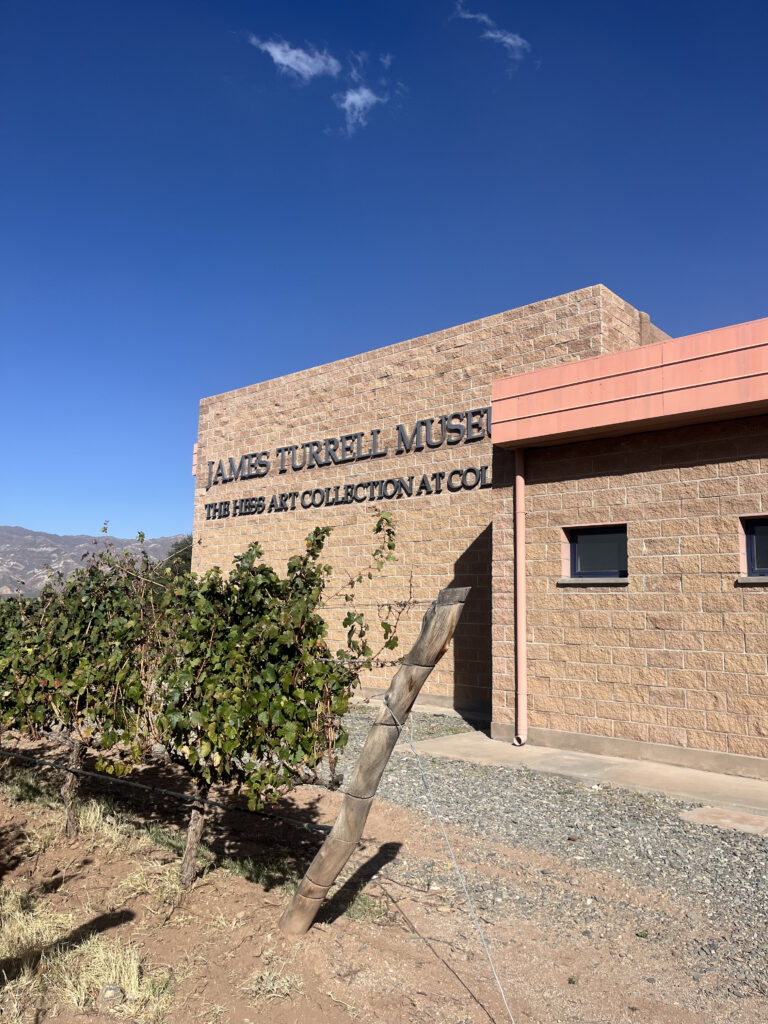
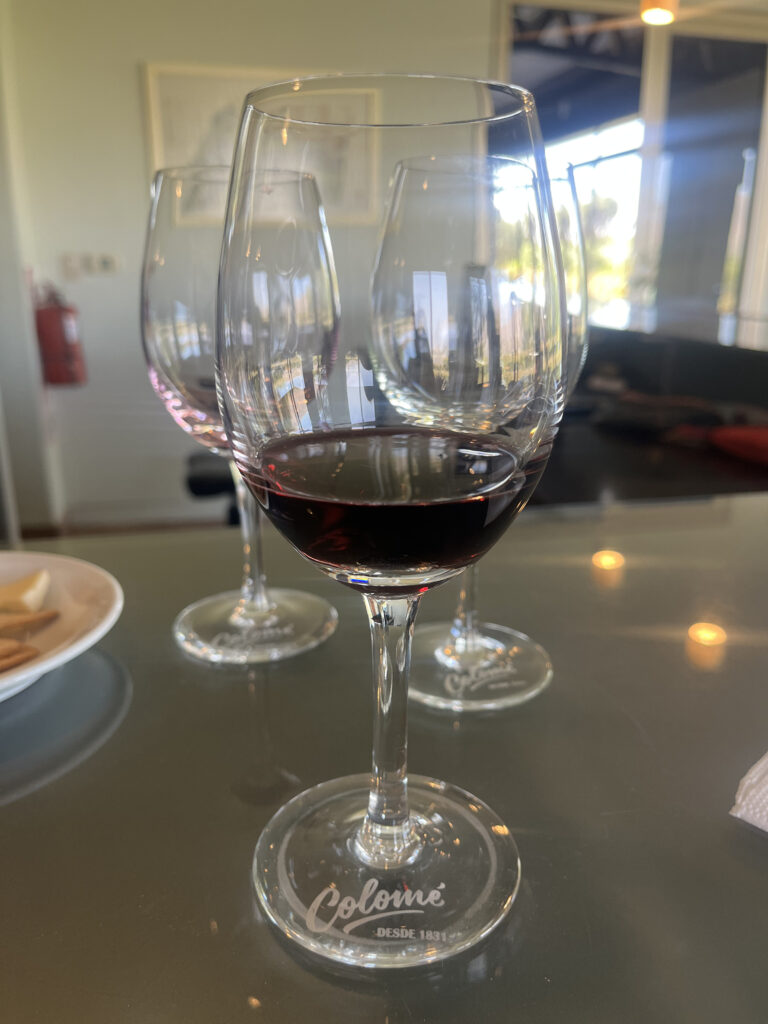
It is possible to visit the Northwest all year round.
Il faut cependant savoir que de mid-December to mid-end of March is the rainy season.
Dans cette région montagneuse et sèche, le niveau des hauts monte alors rapidement.
Les routes sont bien souvent coupées à cette époque de l’année.
Il faut alors prendre son mal en patience et rester flexible.
A noter également que durant cette période c’est l’été et celui-ci est très chaud.
-> Good to know: At Travel Coach, we recommend that you choose the months of April to November to visit the Argentine northwest in the best conditions.
On the main roads, you can use the buses, but they pass without stopping and therefore limit the visits. If you are a driver, you can rent a car. And then it is also possible to let yourself be carried away and discover the beauties of this region accompanied by a driver-guide.
Good to know: When self-driving, pay attention to the model, prefer high cars with a good engine.
To get from San Pedro de Atacama in Chile to Salta you can take the bus, Two companies have links (Andesmar and Pullman).
To get from Iguazu to Salta, there are direct flights between the two destinations.
Salta is located at 1.152 m from altitude.
Humahuaca is located at an altitude of 3,012 m above sea level. It is advisable to take precautions to acclimatize and avoid altitude sickness, especially if you are going to visit Cerro Hornocal.
Altitude sickness has medical contraindications. Before your stay, you can consult the opinion of your doctor or cardiologist. To limit the symptoms related to altitude sickness, you should climb gradually, ideally in stages.
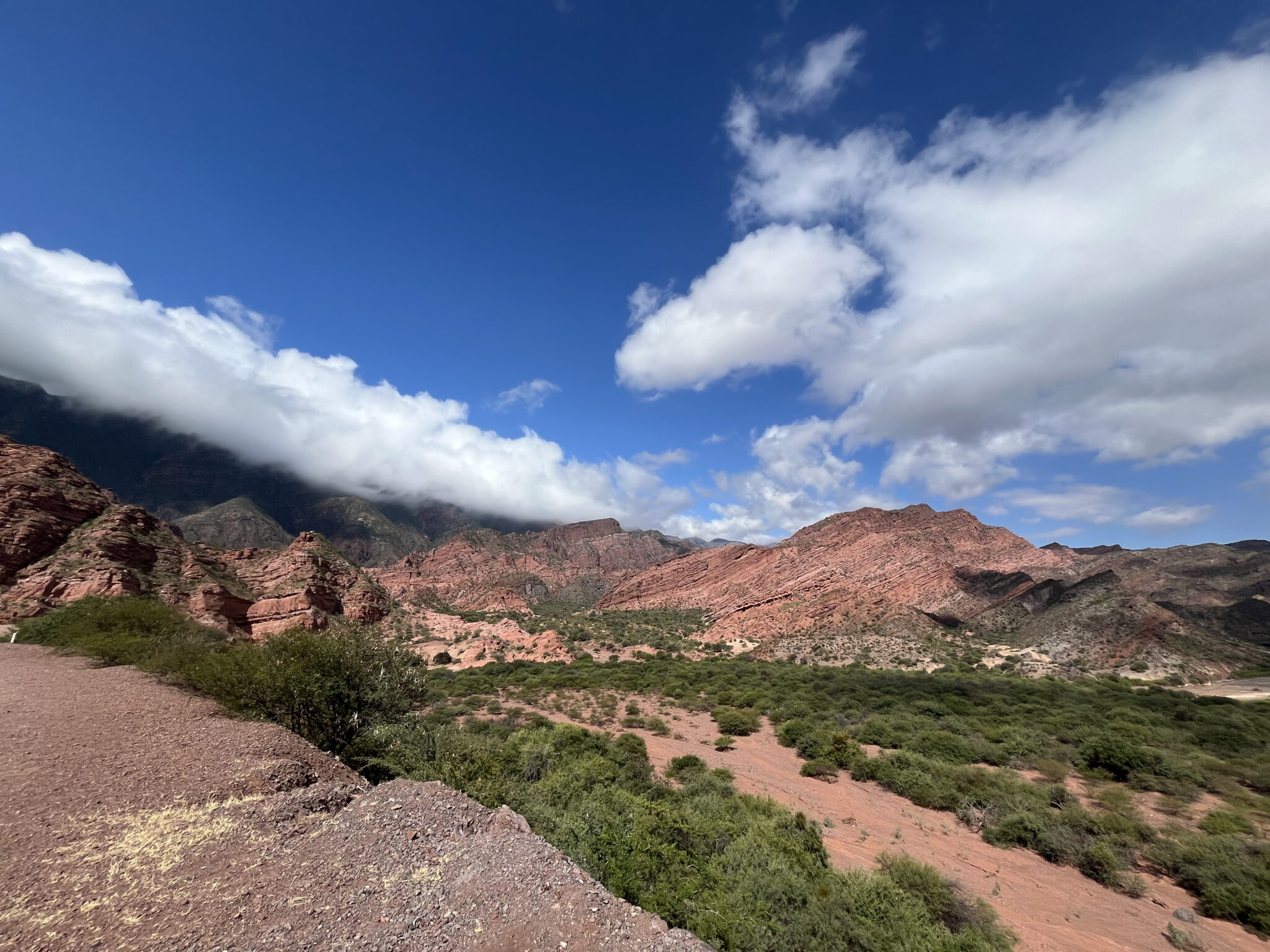
To establish a budget for your stay in the Argentine Northwest, many factors must be taken into account. On the one hand, it depends on your choice of transport :
Ifyou opt for a self-drive tour , it costs about $50 per day for a small car and $150 for larger SUV-type models.
You can also choose to hire a driver-guide to let you go. In this case, it is necessary to count at least 200 USD per day and per person based on 2 travelers for the services of a driver. Everything will depend on the route and the number of km. And then if you want to opt for languages.
Another important point for budgeting is your hotel preference. If you are looking for simple hotels or if you want more luxurious or even exclusive services. At TavelCoachChile we have chosen to build our catalog of partners taking into account all budgets and needs. We then searched, visited and selected good addresses for each of the following categories.
This destination is ready to contemplate and many sites are to be seen for free. However, in order to achieve acultural discovery of the region and especially of local customs, we have prepared and chosen unique experiences. Depending on the activities, it starts at USD 50 per person.
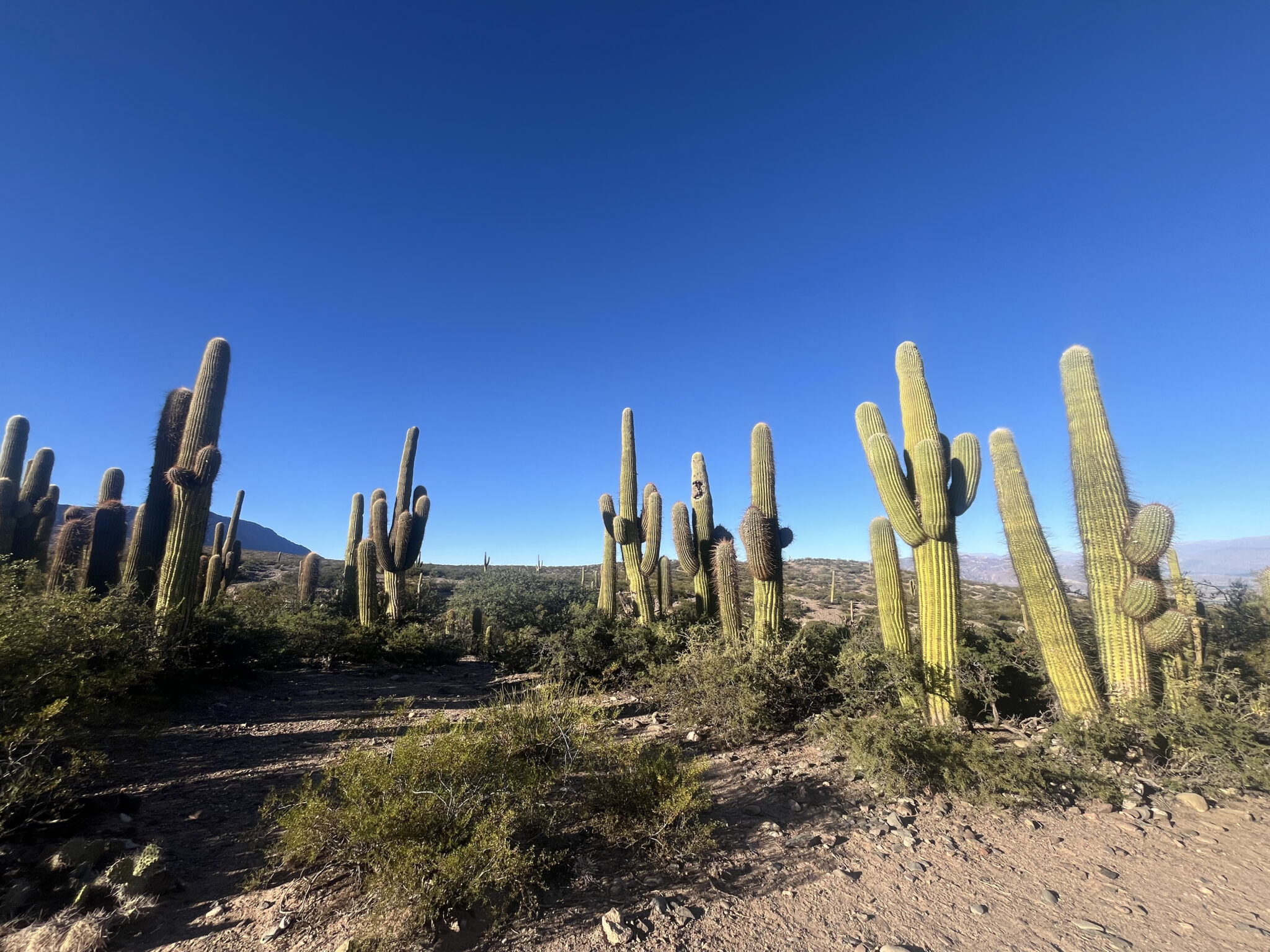
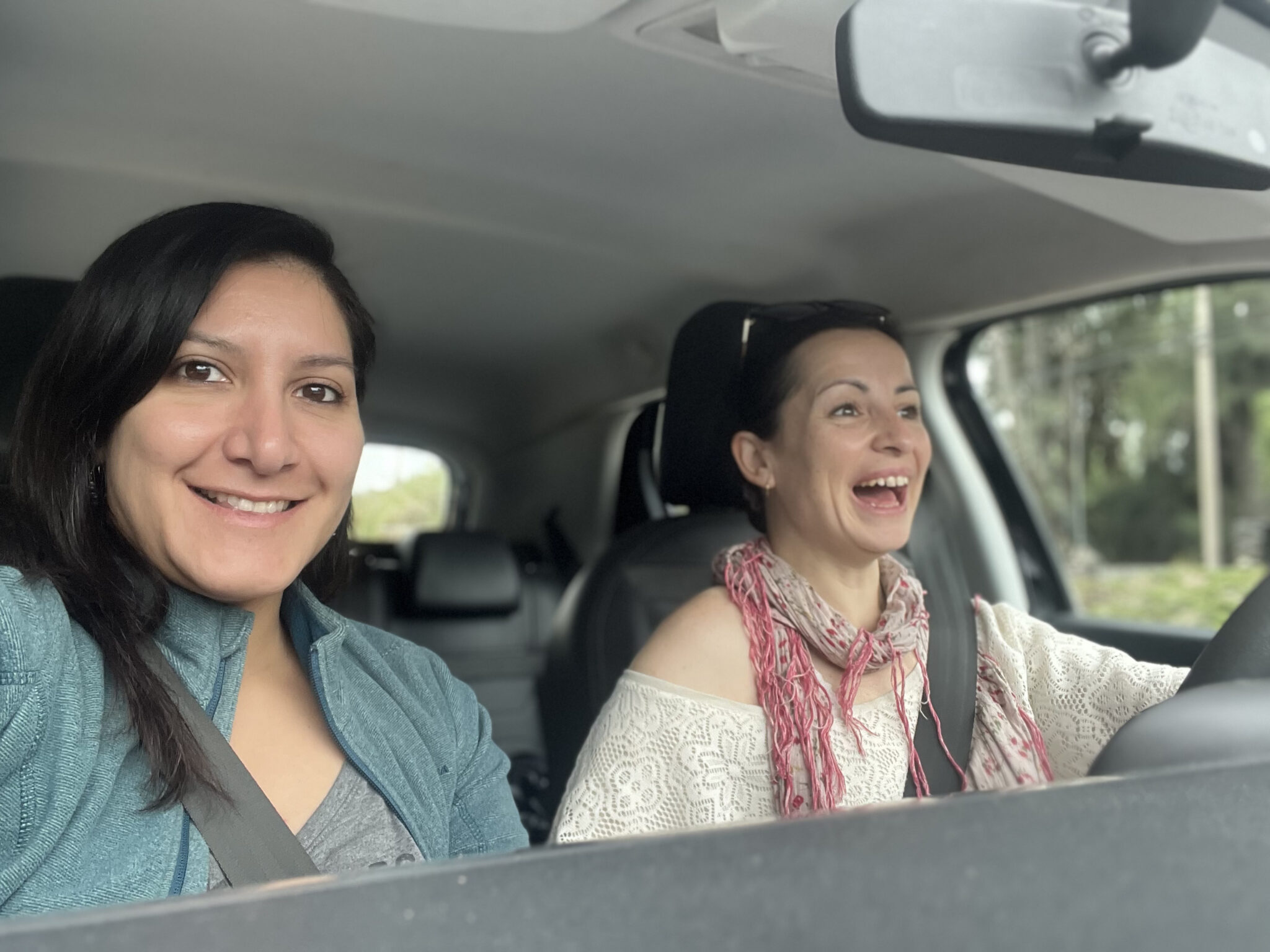
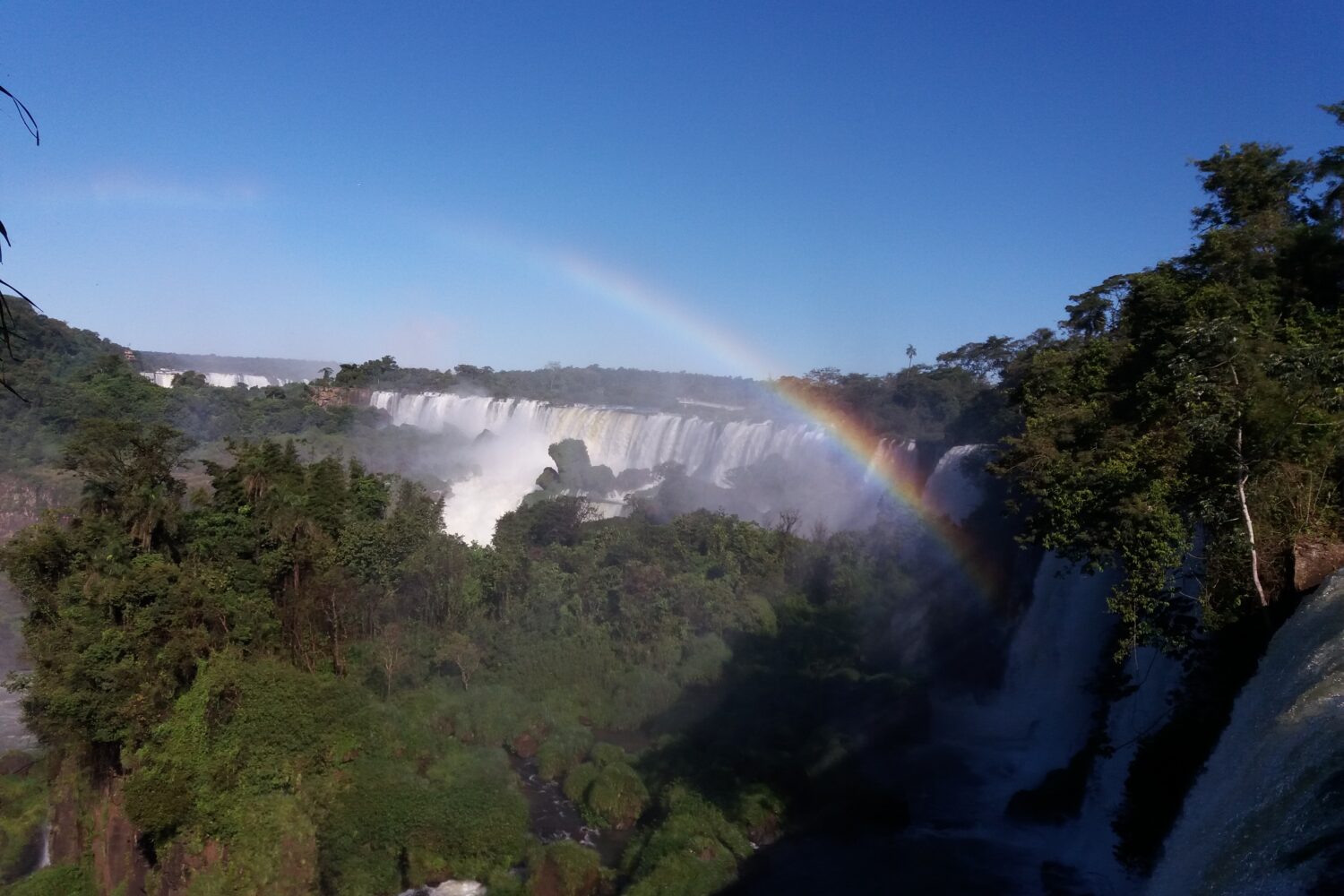
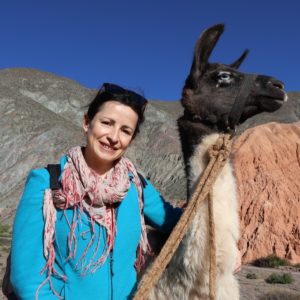
Anne is a Travel Designer and had the opportunity to make a 10-day field visit with Claudia in May 2024. She was in charge of writing this travel guide.
